I couldn’t resist the temptation of using words from John Steinbeck’s work The Log from the Sea of Cortez. It seemed particularly apt because I have been reading it while we’ve been cruising around the places he and the crew of Western Flyer visited some 80 years ago. I referred to it briefly last time, how they documented their findings from tide pools and littorals with detailed descriptions of a plethora of creatures, flora and fauna, along with some deep and – it has to be said – complex, intellectual theories on the philosophy of life. I skipped over those parts, but it was interesting to read his perceptions of places we had been such as La Paz, Puerto Escondido and Loreto, and his observations of life on board a boat. It was slightly disconcerting to learn that many of the creatures they retrieved from the water were poisonous and that he came across lots of snakes, worms and urchins with lethal spikes. I tried not to think about those when Paul was encouraging me to give snorkelling another try! This entry covers our second venture into the Sea of Cortez, the main aim of which was Sister Midnight’s haul out in Marina Puerto Escondido on November 23rd.
It was only a couple of hours to our first anchorage at Ensenada Grande Cove, Isla Partida, which sounds more like a luxury resort than a tiny anchorage spot. It was pretty, calm and sheltered, however when we set the anchor just before sunset, which covered all our needs for a one night stay.
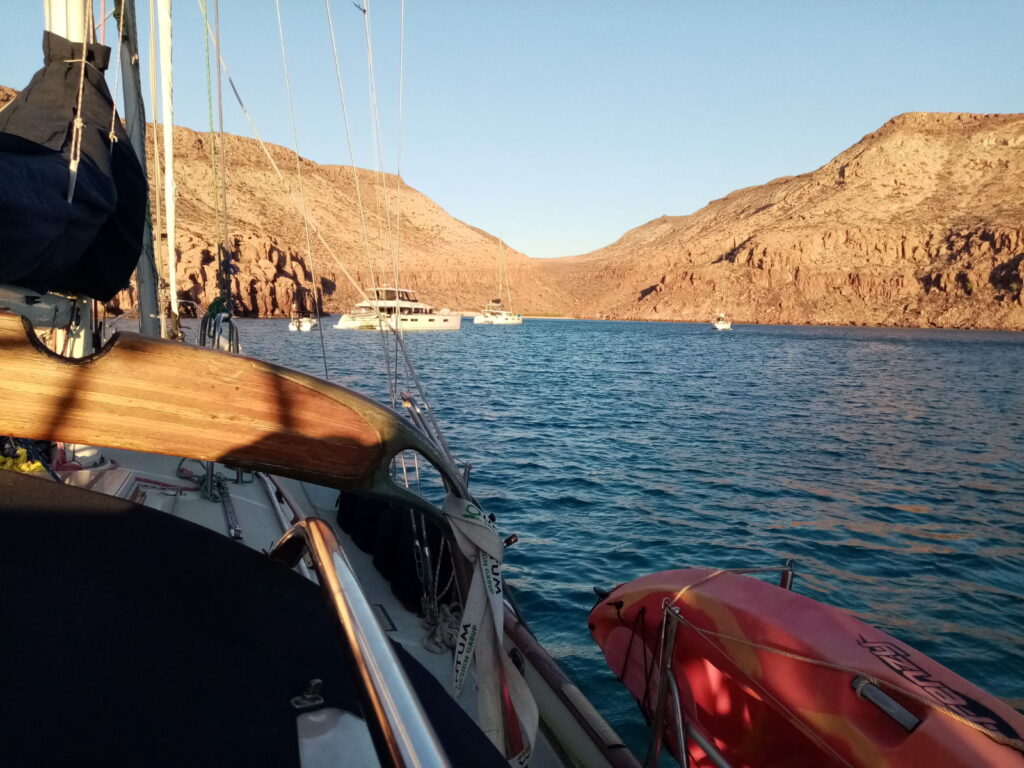
After a peaceful night, we weighed anchor just after 9 the following morning. The day had dawned with a few more clouds and a northerly wind blowing at 20 knots. The calm conditions we’d had in the cove disappeared as soon as we were out on the open sea. We were about to have an extremely rocky passage! The boat immediately took on what I like to term the ‘bucking bronco’ mode as it ploughed into the huge waves coming at us head on. The bow plunged downward into the chasm and was then pushed up high as the wave rose, creating a lurching, up and down pattern which felt like we weren’t moving very far forward at all. It had been a while since I’d experienced that sea state and I hadn’t expected the need to stow things securely. Soon I had to deal with water gushing through the windows and hatches which, although closed, weren’t securely tightened. Not long after, there was an alarming crash from below when the air conditioning unit shot off the starboard bunk onto the floor taking the printer with it. They were hurriedly secured on the port side with the table stabilising them; it appeared that the planned three hour trip would take a lot longer.
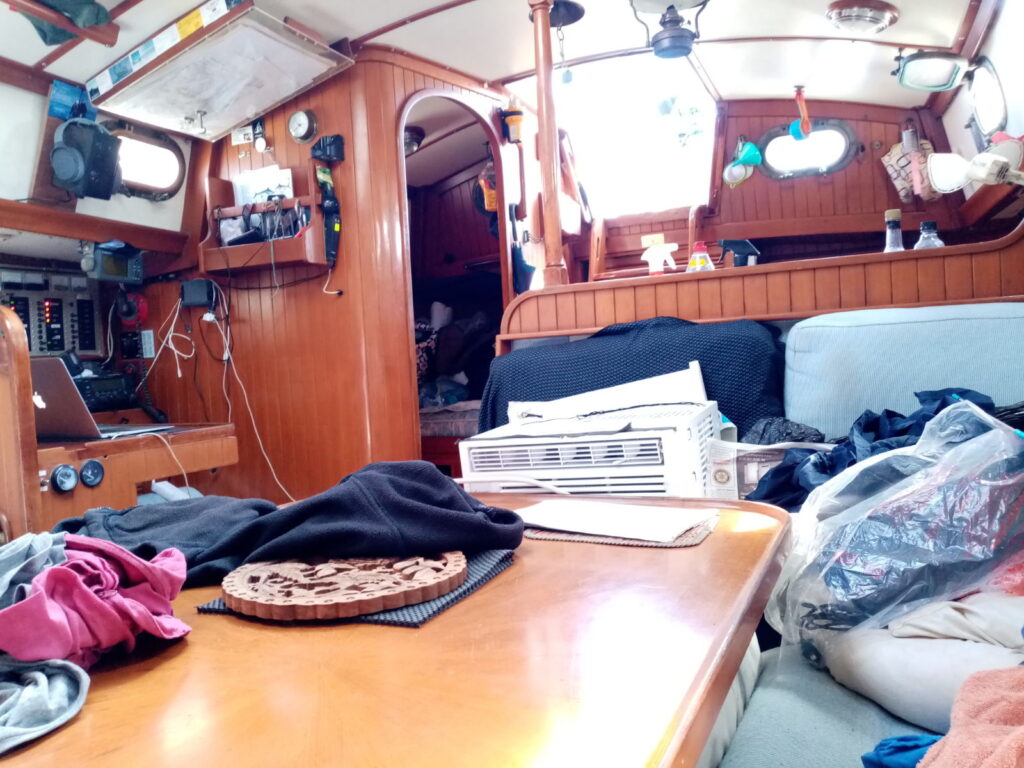
Aside from that, Paul was largely unconcerned with the conditions as we sat in the cockpit watching the stern go up and down, changing the appearance of the horizon behind it at an alarming rate.
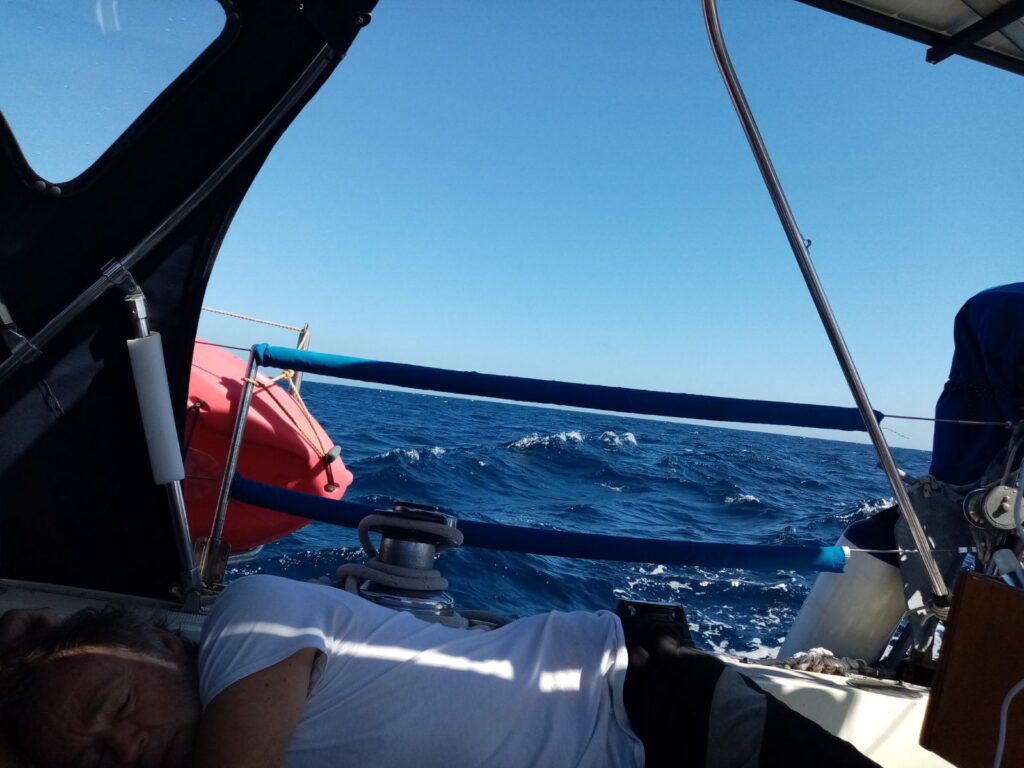
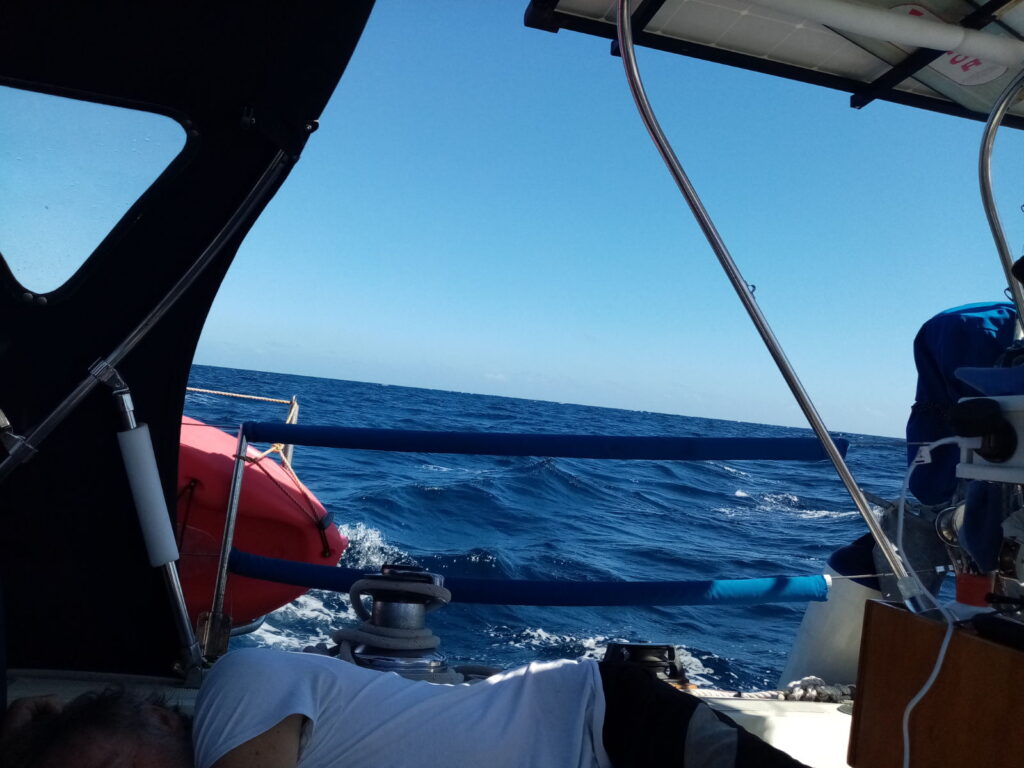
A couple of hours later when I had retired below to lose myself in a novel, I asked Paul how high he thought the waves were and was shocked by his response of ‘about 15 foot or more’. By then, he had begun to feel a bit seasick as the boat continued to pitch and toss its way through the relentlessly high waves. He stood with his back to the mast for the final hour, a la J.W Turner until the nausea abated. The journey ended up taking us 5 and a half hours, and even as we approached the bay at San Francisco, I found it hard to believe that conditions would improve there. The wind was just as strong and the sea was still bouncing us around, but it was with much relief that we dropped anchor at 3pm in calm, shallow water with the sun shining, and it wasn’t long before the wind became refreshing instead of strong and blustery.
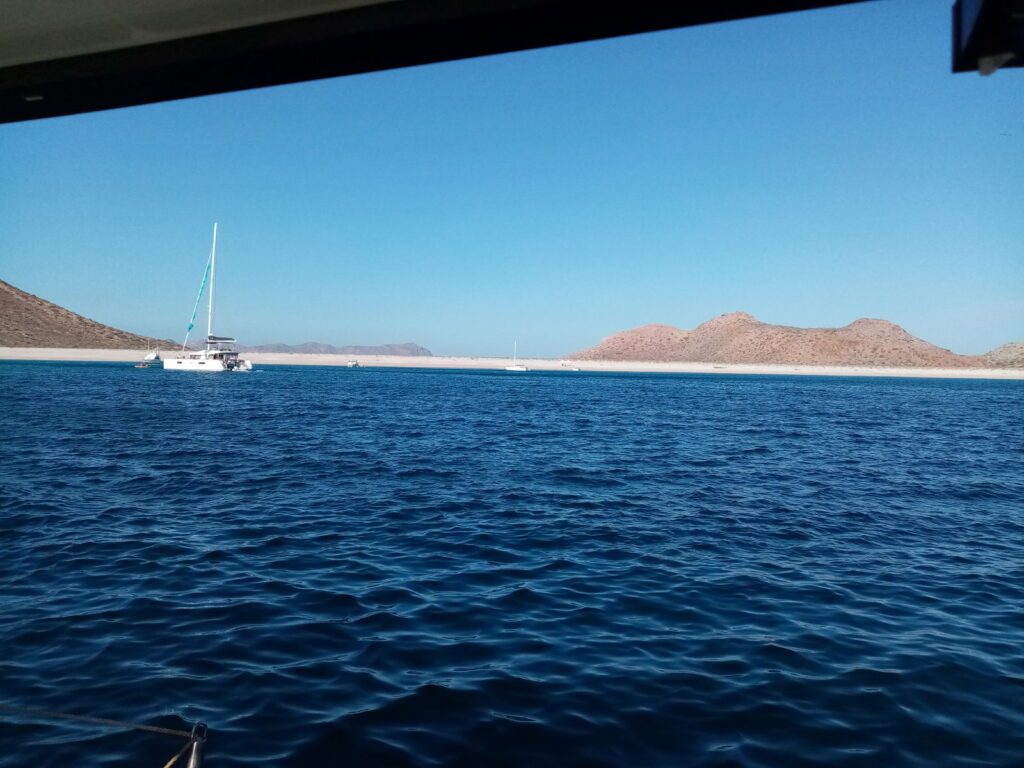
There were a few other boats anchored with the usual assortment of kayaks, jet skis and inflatables but later in the afternoon we were joined by one with an extremely loud generator. The noise it made sounded like roadworks were taking place nearby and it stayed on all night. I’m so pleased we don’t feel the need for one.
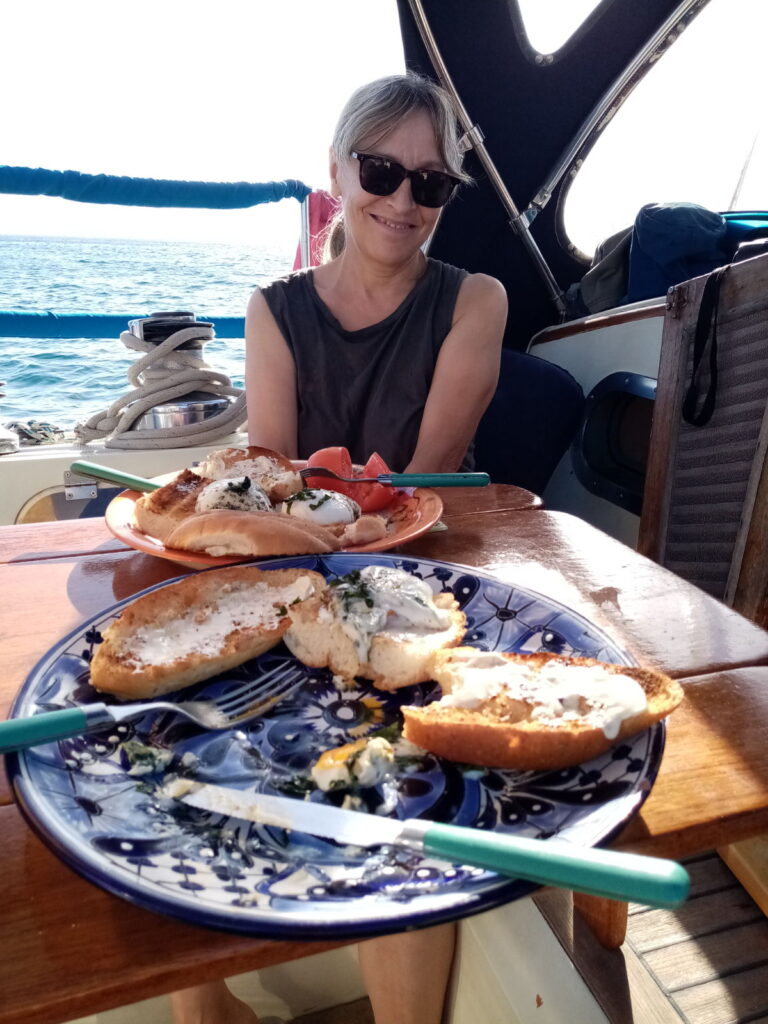
It was truly the calm after the storm the next day. The water was flat and still as far as the eye could see and so clear in the bay we could see hundreds of fish below the surface. It looked as if it could get hot later so we went ashore mid-morning, having decided to stay another day after the previous day’s not so smooth sailing. A deserted crescent-shaped sandy beach, surrounded by hills covered in cacti and the distinctive rose-coloured rock greeted us as we drew closer in the dinghy. Once ashore, Paul led me across the beach to a flat plain which glistened with dried sea salt. We were about to see Isla San Francisco’s salt ponds. These are rectangular, shallow beds in the sandstone which collect the sea’s salt after the water has evaporated over time. The picture shows how the salt clumps around the edges once the sun has dried it. The water has a delicate pink hue, which made me think of the expensive pink Himalayan sea salt I’ve seen on sale, but the salt itself is pure white. It looked like a sunken bath with rose-coloured water, and I found it quite fascinating.
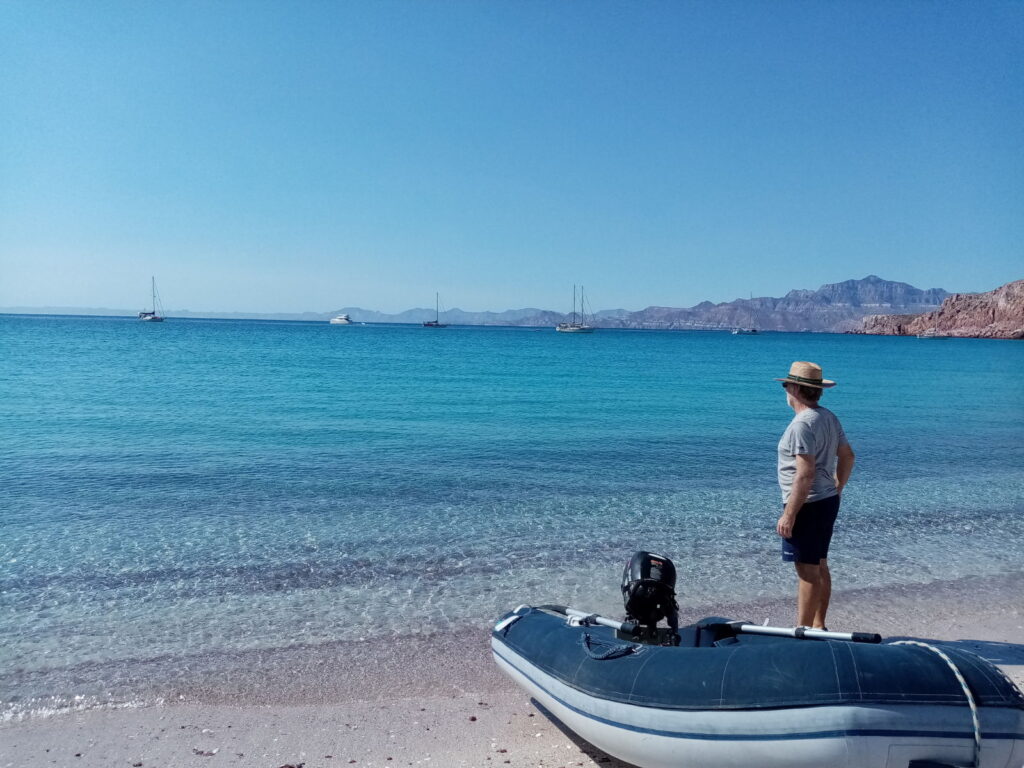
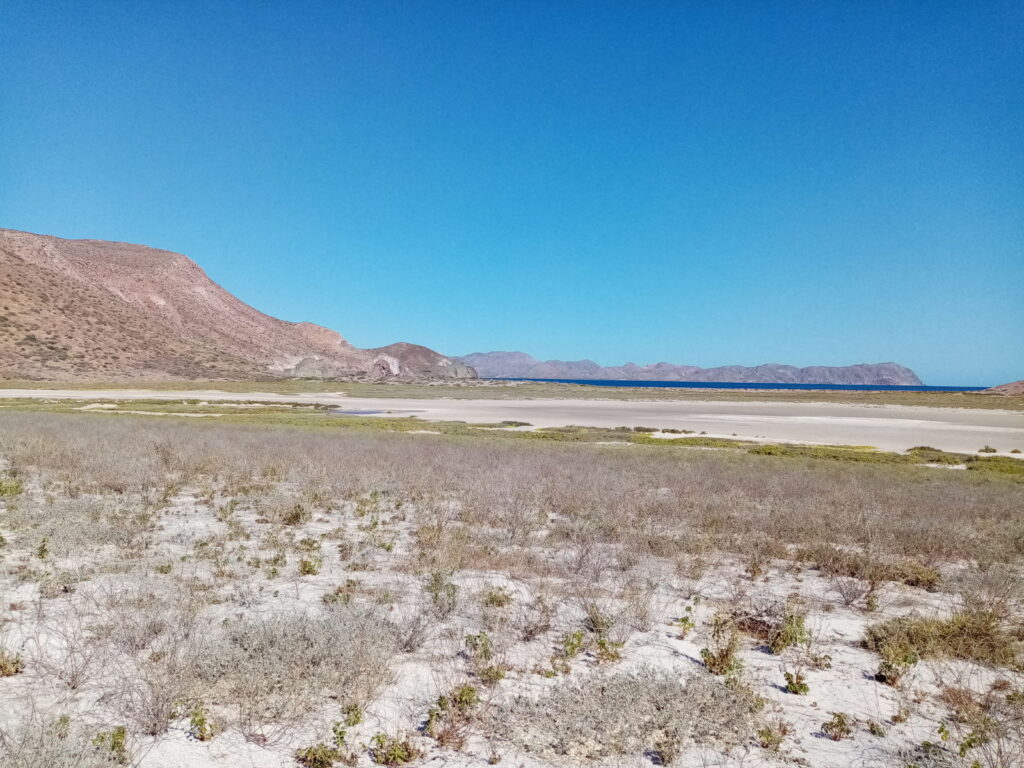
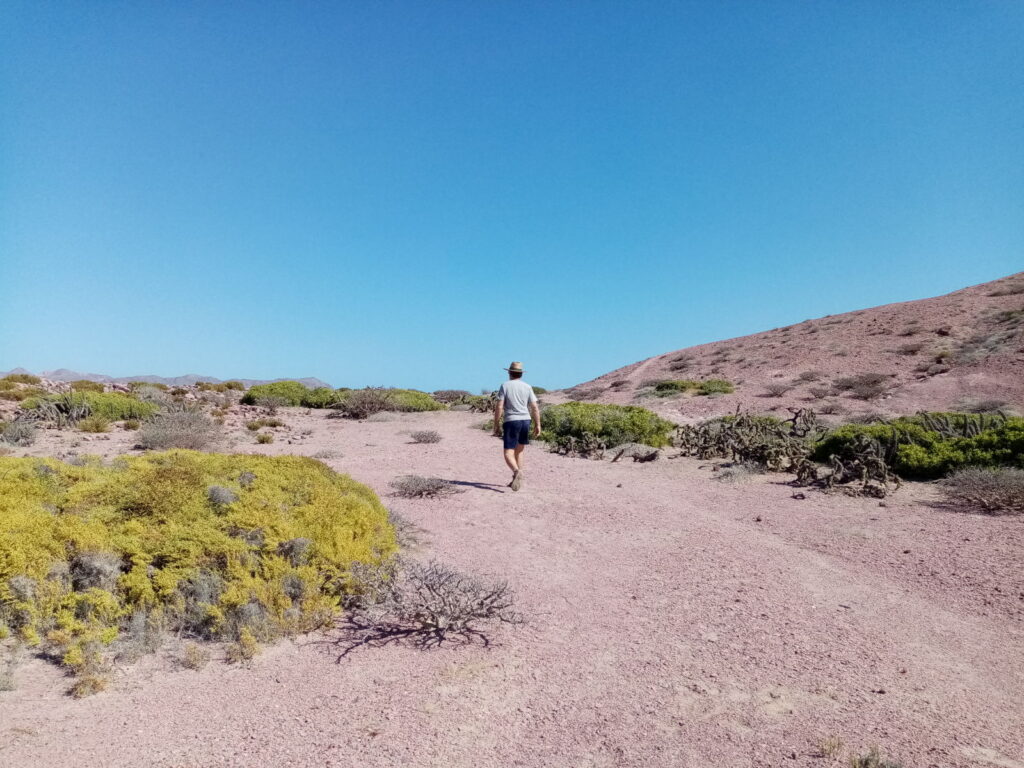
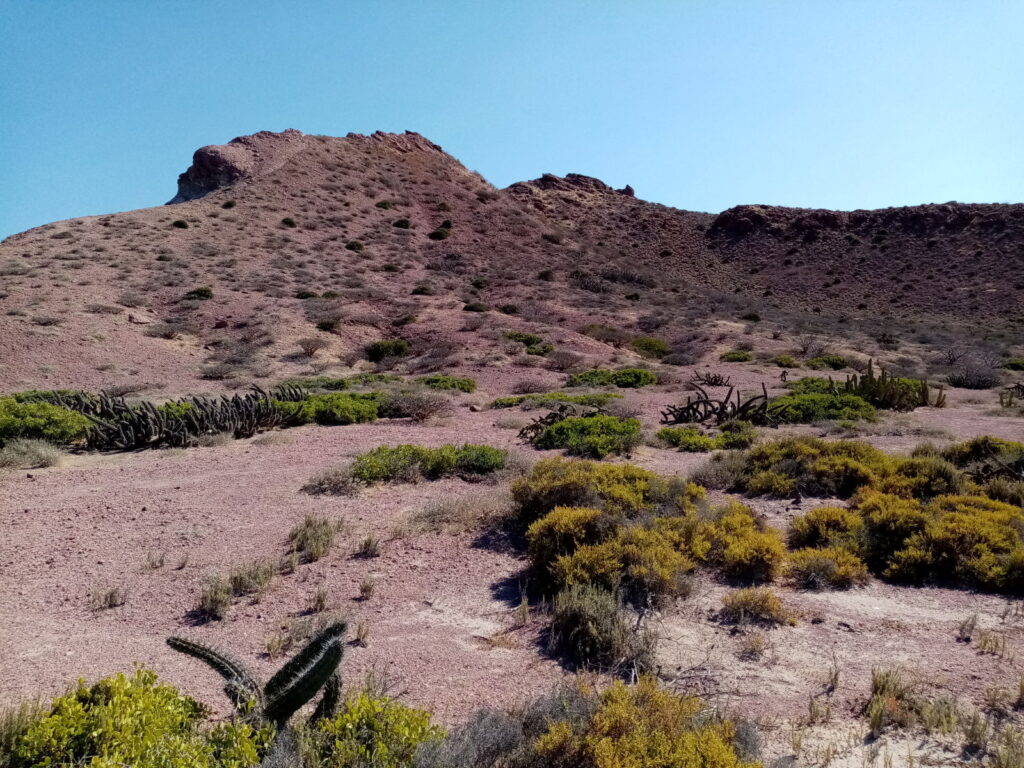
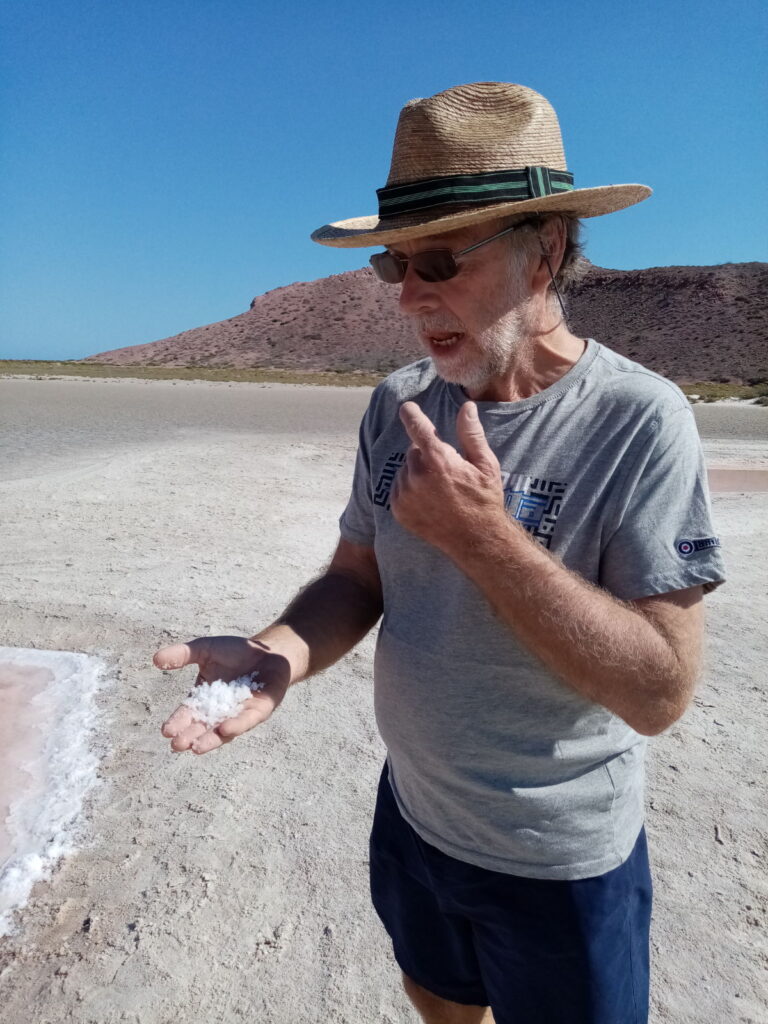
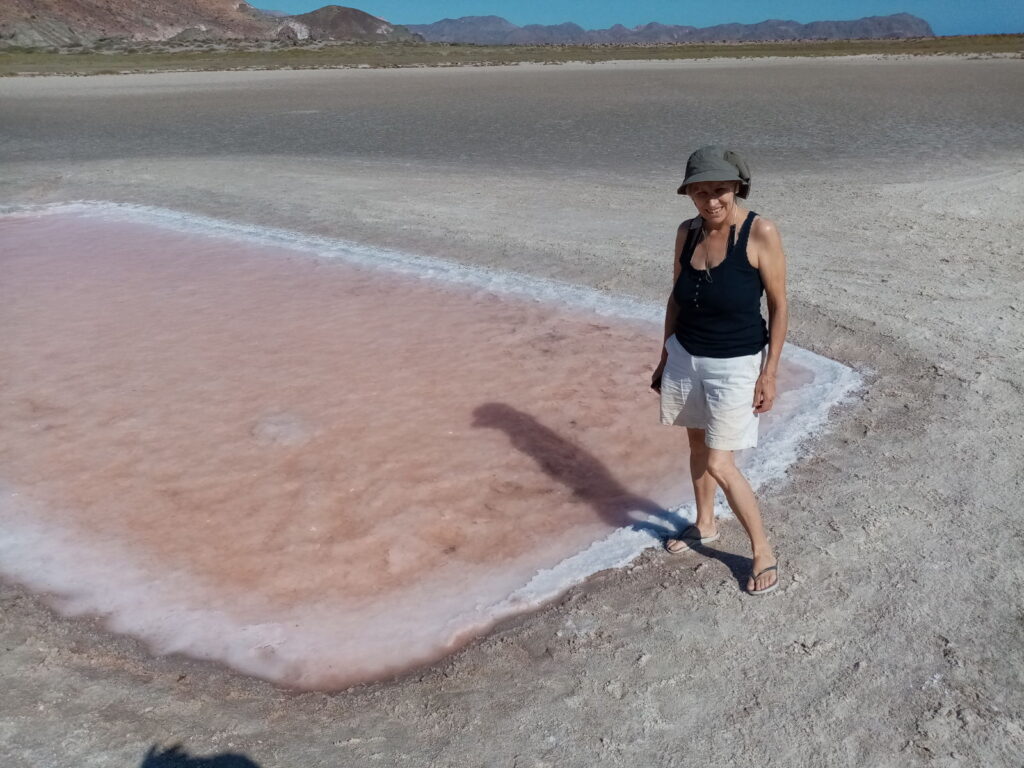
The eastern side of the island was rugged, more like Cornwall’s rocky coast. Waves crashed over the rocks and big red crabs crawled away from us to hide amongst the rocks. Eagles and frigatebirds soared over the hills and there was no one else around. We sat on the rocks for a while just appreciating it all, until the heat forced us to seek relief with a swim in the crystal clear water.
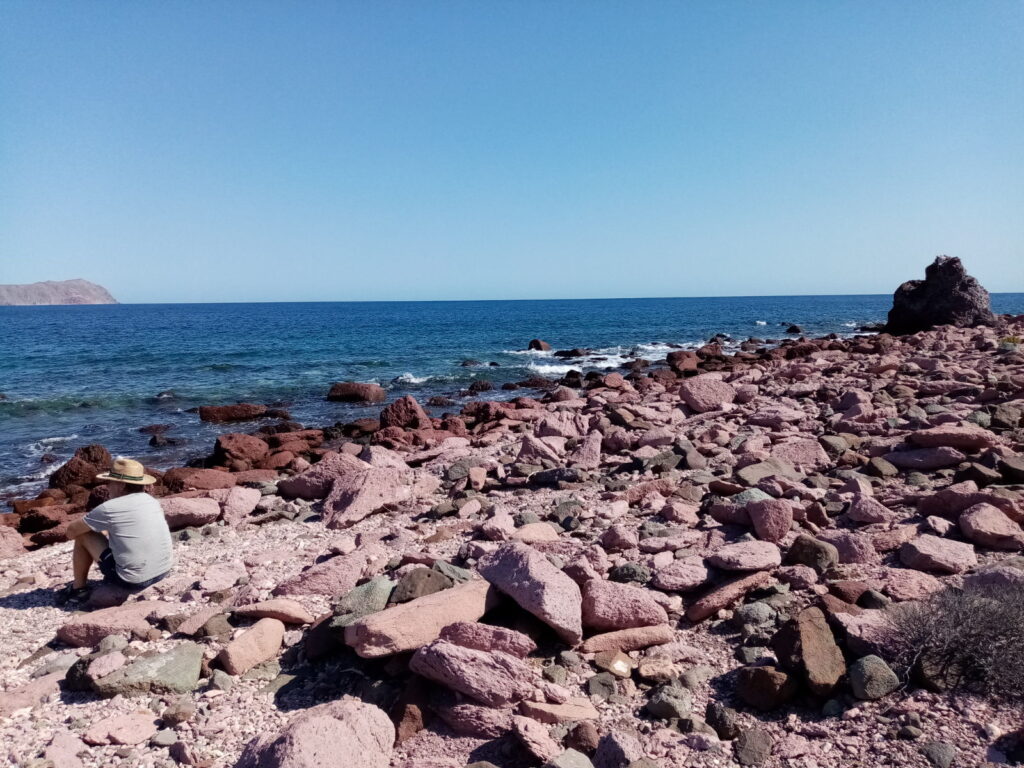
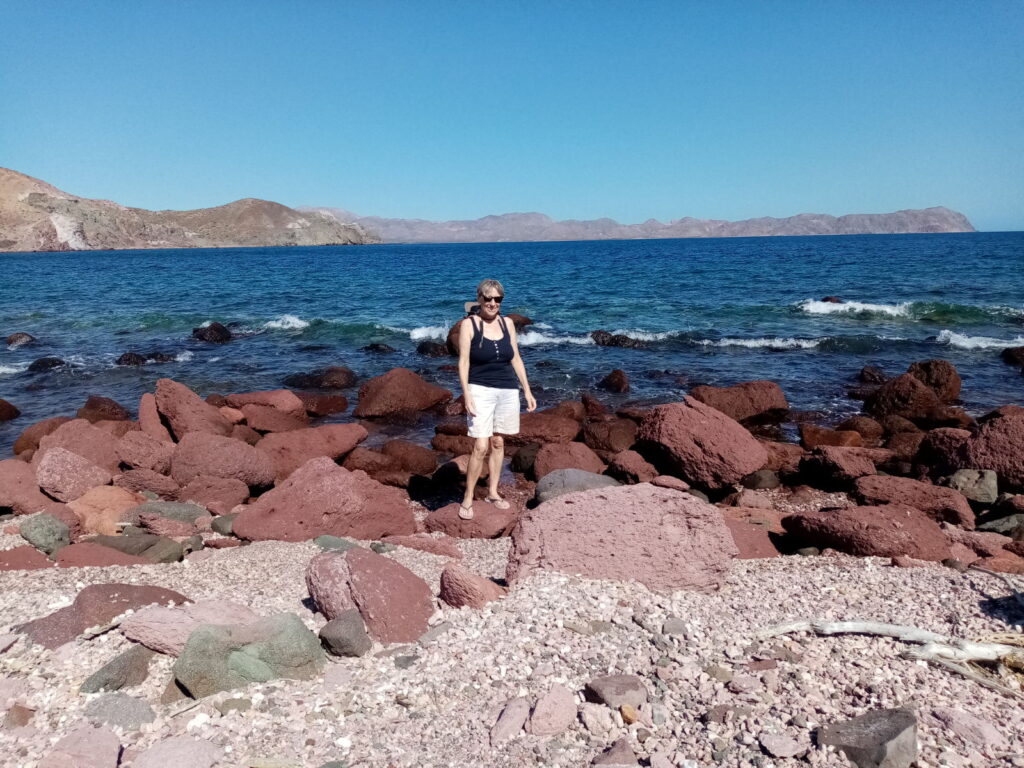
Paul needed to go up the mast later in the afternoon to fix a couple of things. It made me dizzy just looking up to take the picture.
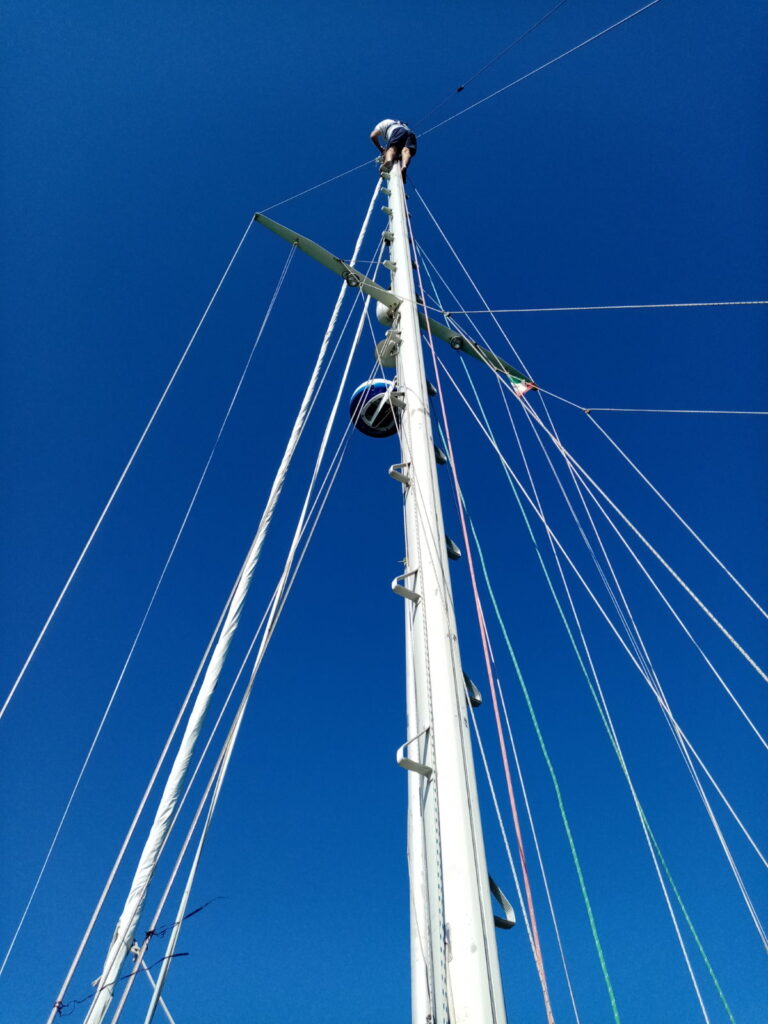
We left Isla San Francisco early the following morning. At 8am I was in the cockpit with a freshly-brewed coffee enjoying the warm breeze on my face; it really is one of the many pleasurable situations when at sea, especially just after sunrise. We were bound for Bahia El Gato (Bay of The Cat). The name, according to legend, comes from reports that a family of pumas had come down from the mountains and taken up residence in nearby cliff caves. Apparently, a lone male puma was often seen fishing from the cliff ledges. This was over a hundred years ago, but it was easy to picture him on the striking pink cliffs at El Gato. The geology is spectacularly pretty: its sandstone has shades of colour ranging from peach-pink, mango orange, deep red and brown. Over time, wind and waves have sculpted the cliffs into shelves and ledges with patterns and strata caused by erosion, along with swirly striped boulders and smooth gigantic ‘pebble’ formations that we thought resembled a giant’s toes.
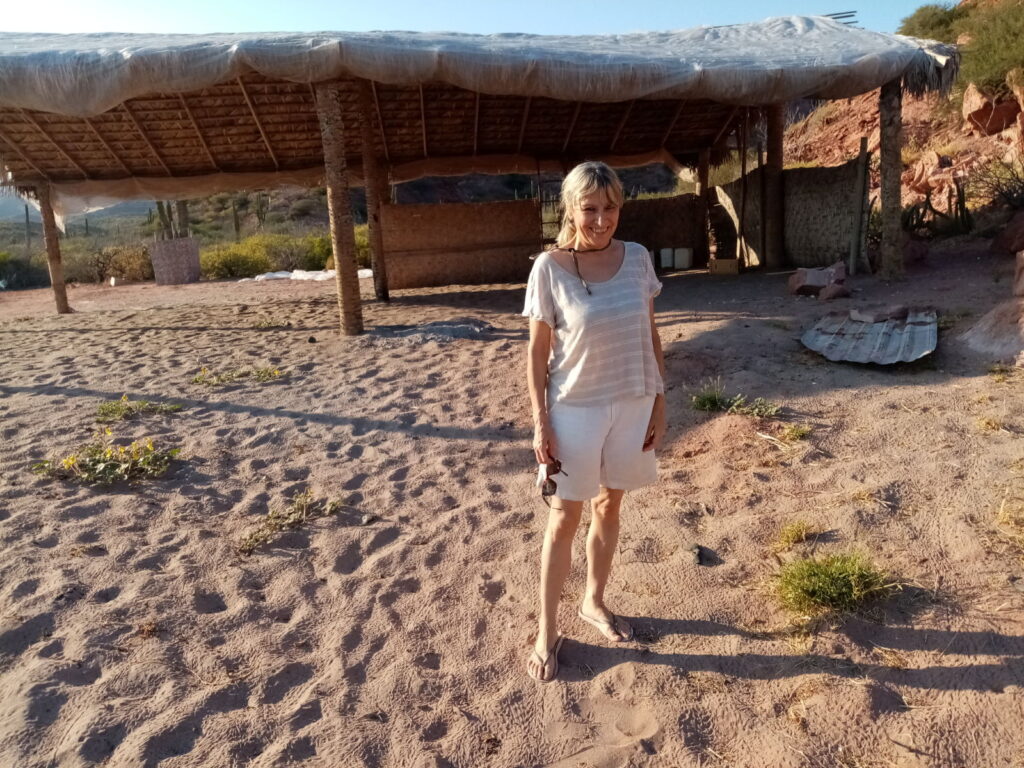
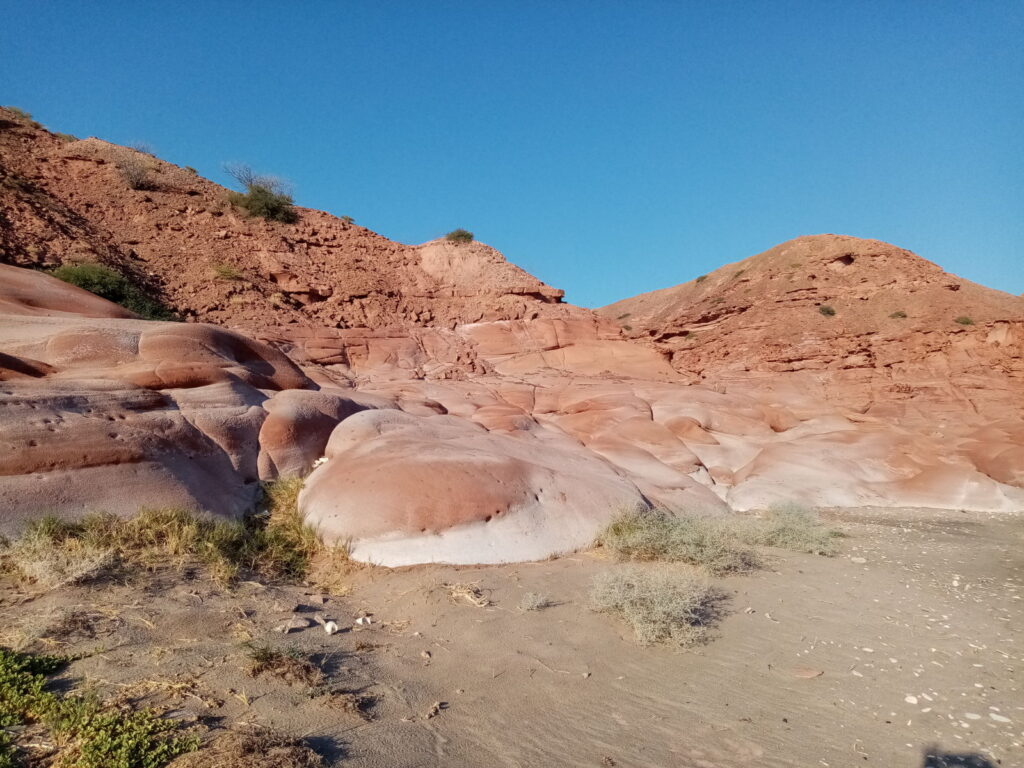
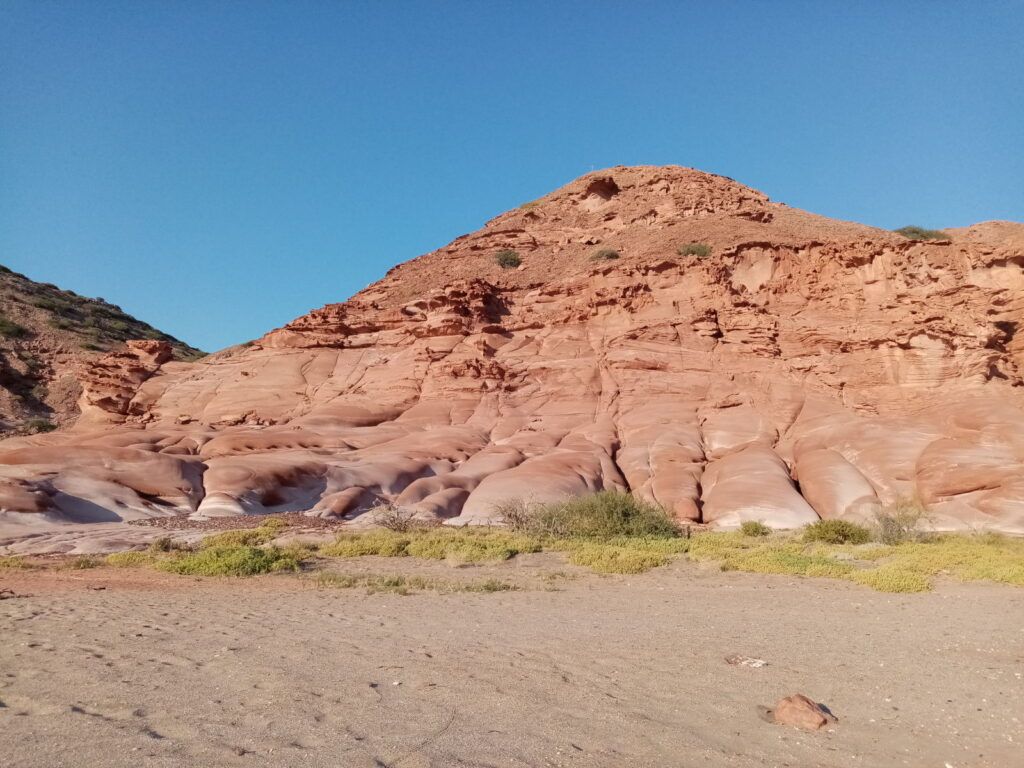
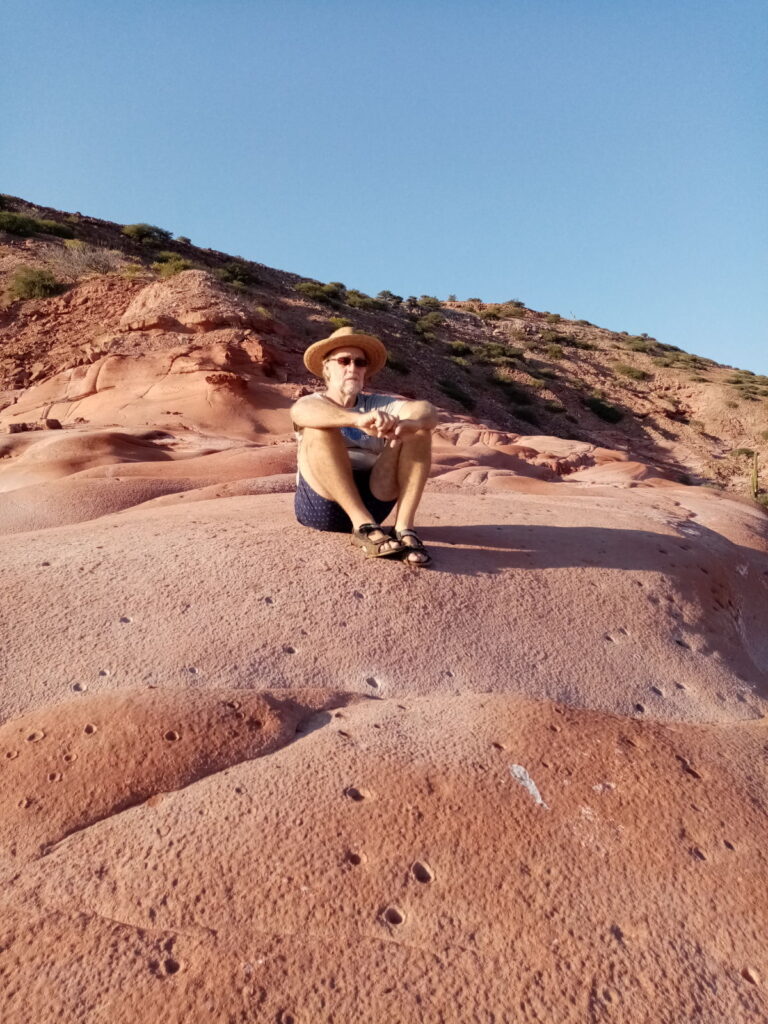
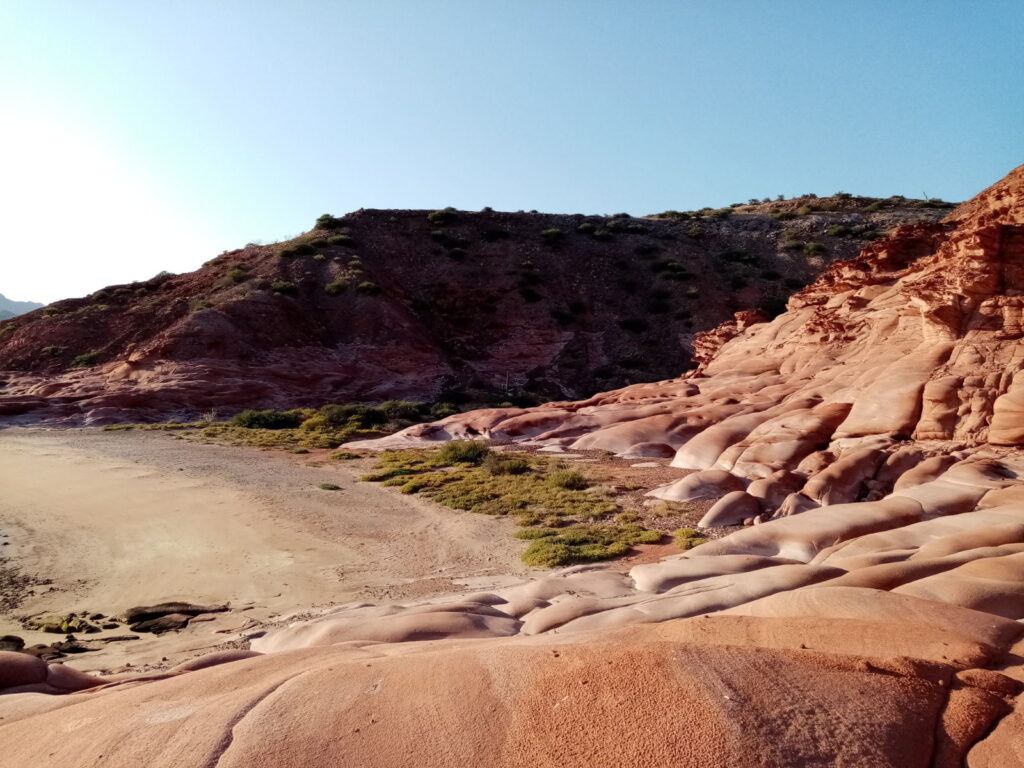
We spent an enjoyable hour climbing the rocks and peering into tide pools wondering if Steinbeck and Ricketts had looked into the same ones all those years ago. Walking along the beach, a lone fisherman from a panga came ashore seemingly for the sole purpose of asking if we wanted to buy any fish because when Paul said no, he went back out to sea and we immediately wished he’d bought some. I obviously took lots of pictures on El Gato.
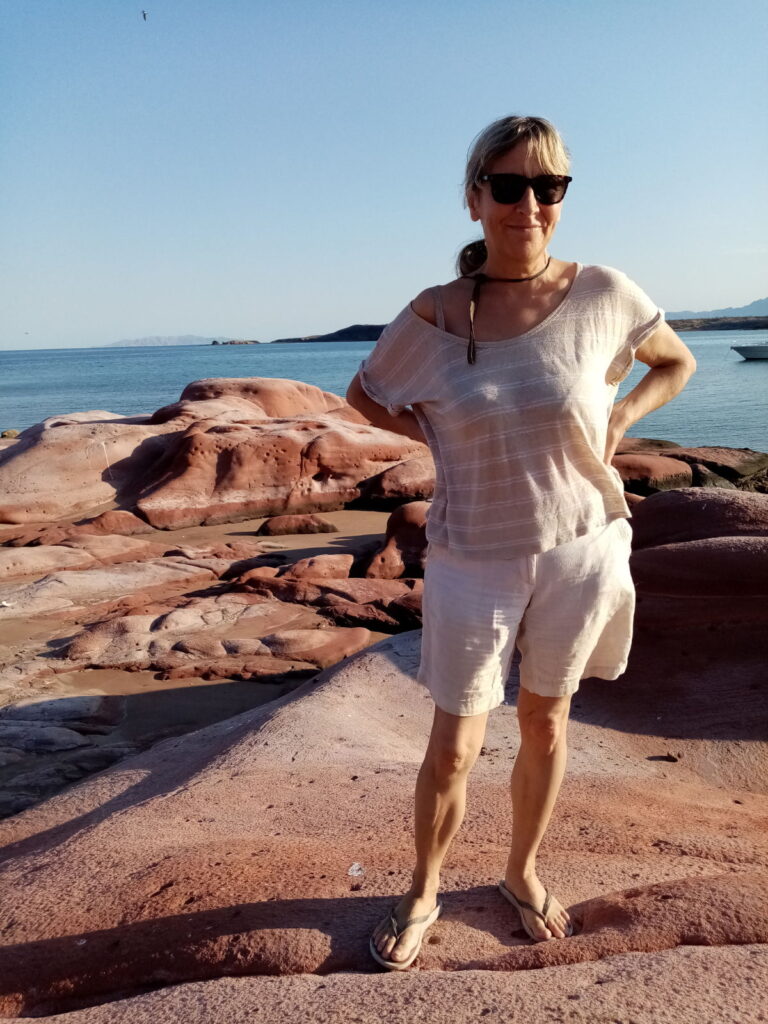
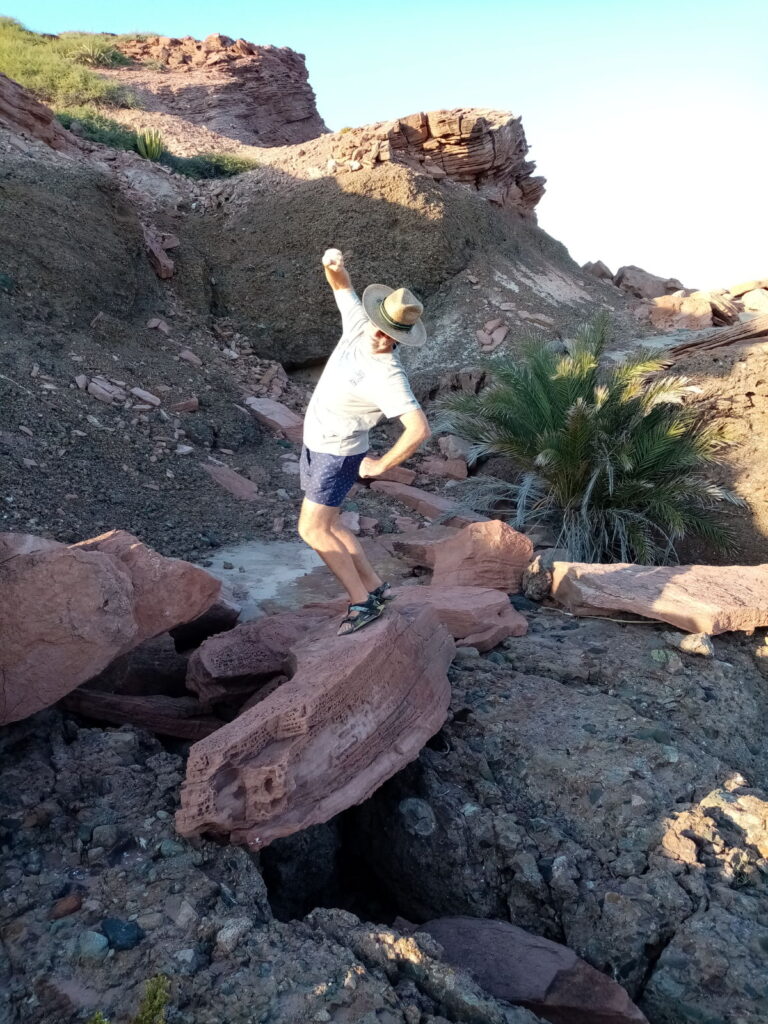
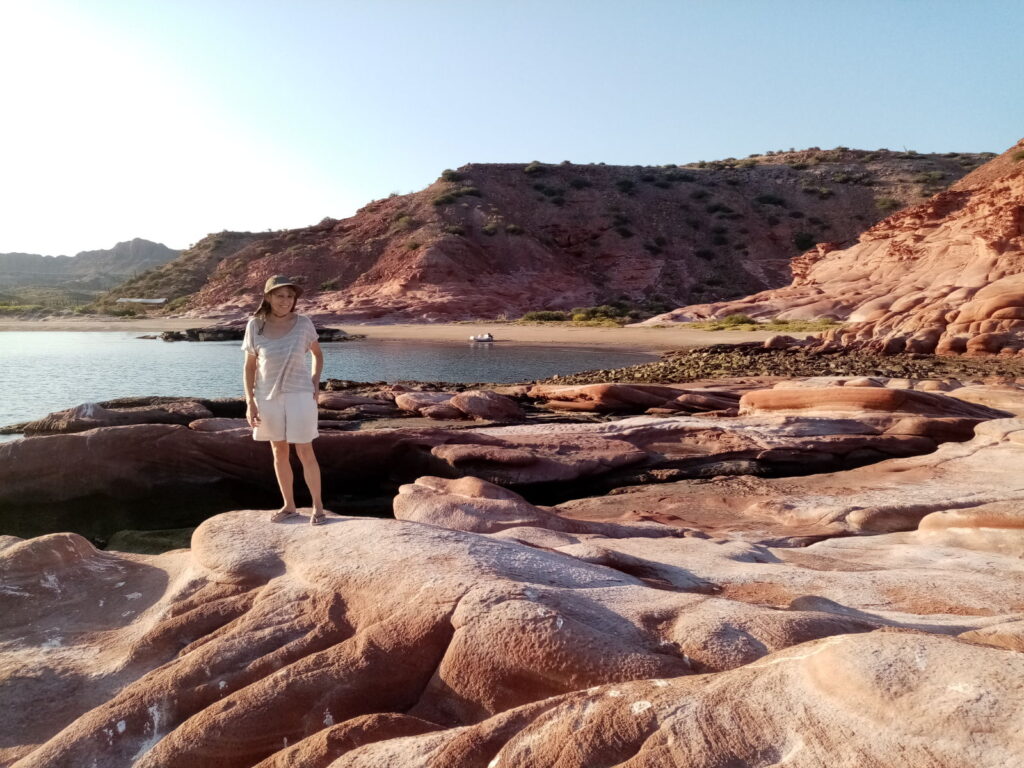
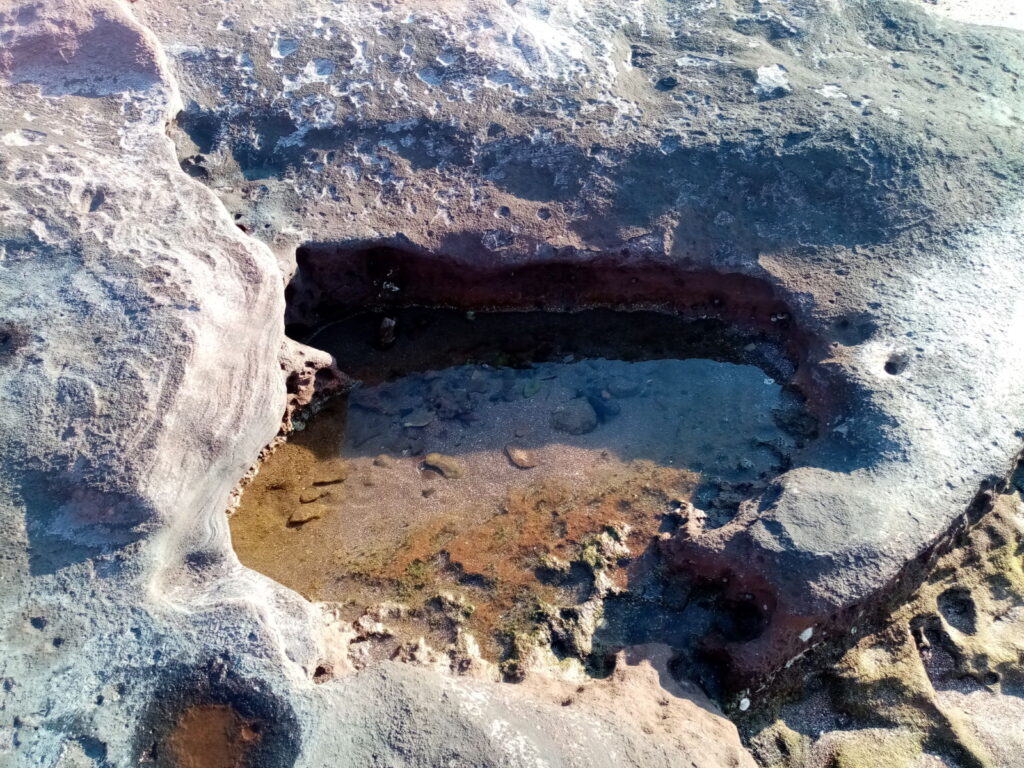
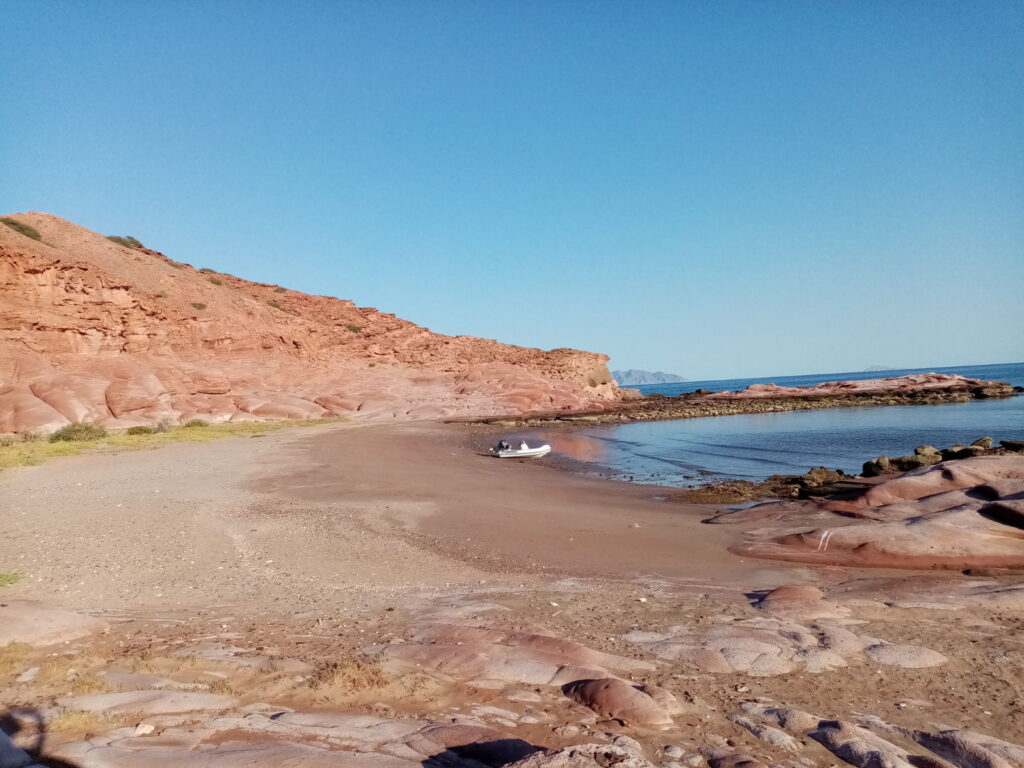
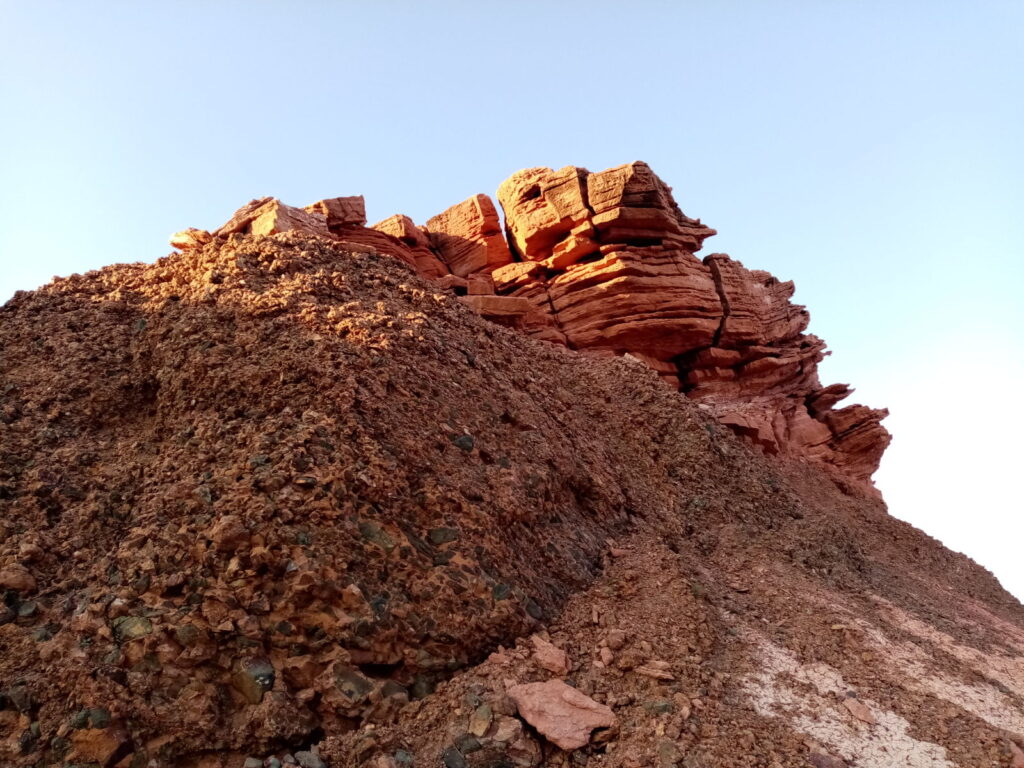
A predicted three hour passage meant we were in no rush to leave for Agua Verde on Wednesday the 18th. Both Paul and Arturo had told me to expect beauty there so my expectations were fairly high. As if to confirm it, the views grew ever more picturesque the closer we got. When we entered the bay it was hard to believe there was a village anywhere, let alone the sizeable one Paul described. I could only make out what looked like a few beach shacks set back from the sand. It was too hot then to go ashore to explore so we waited until after 4 and rowed the short distance in the shallow water.
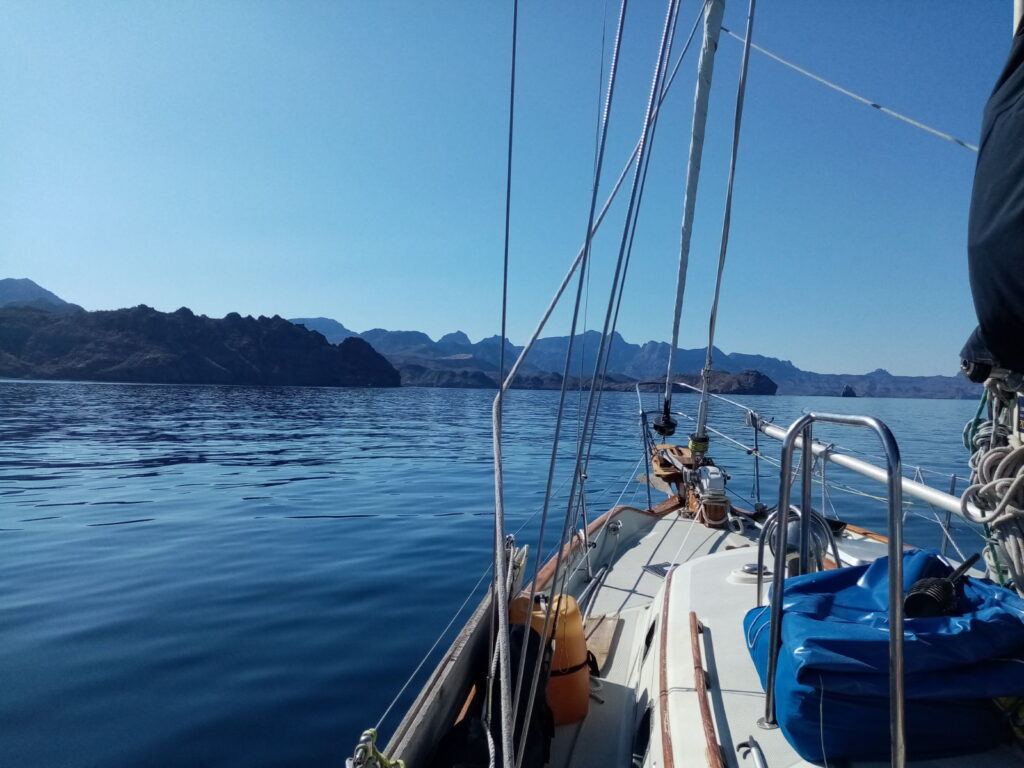
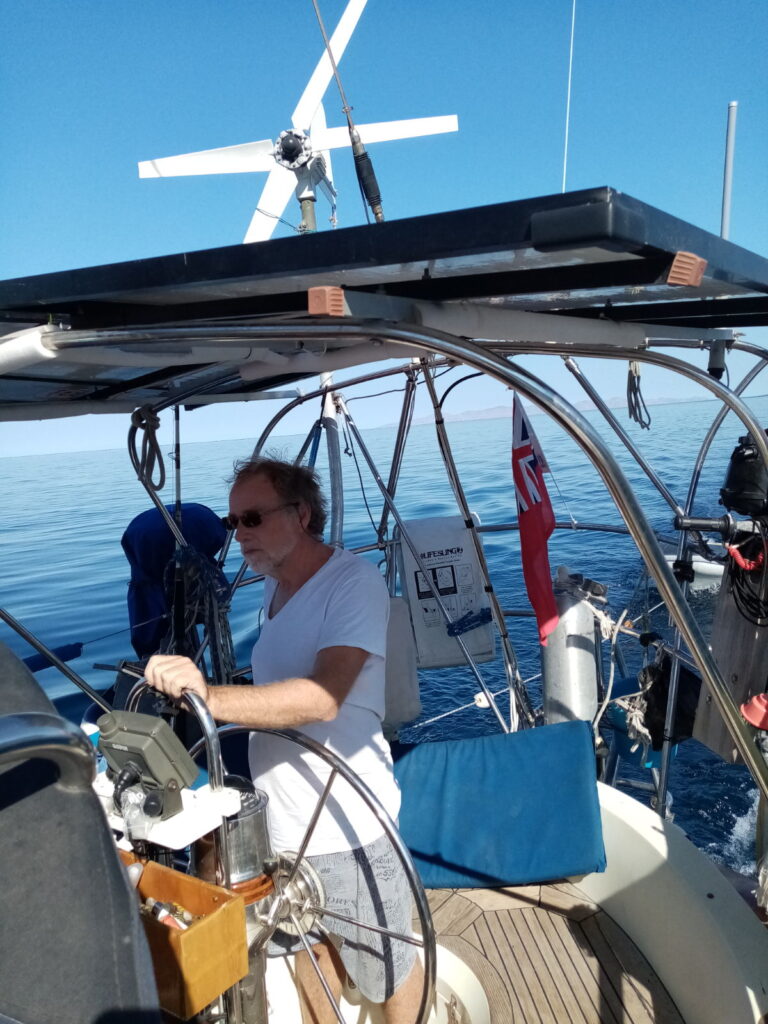
The village reminded me of some we had been to in Thailand. The houses were single storey basic buildings and it was clear people spent most of the time outside. The shop had basic provisions – we had to hail for service from the adjacent house, which happened to have a very cute puppy. It came bounding over to me, and commanded most of my attention while Paul was inside the shop.
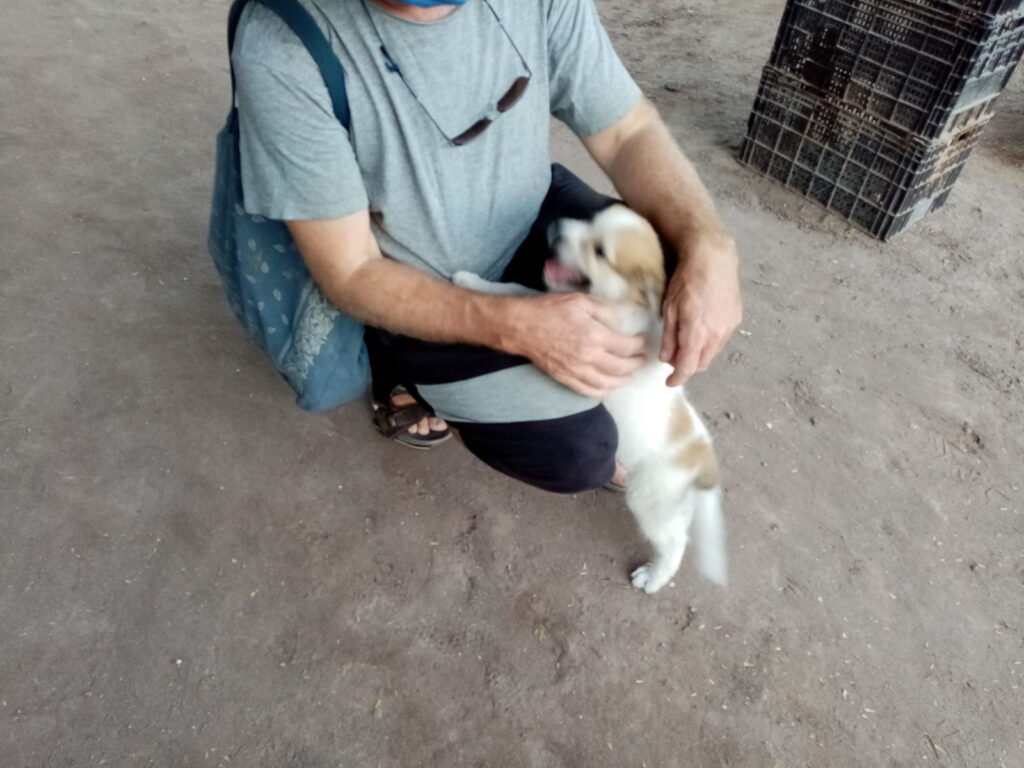
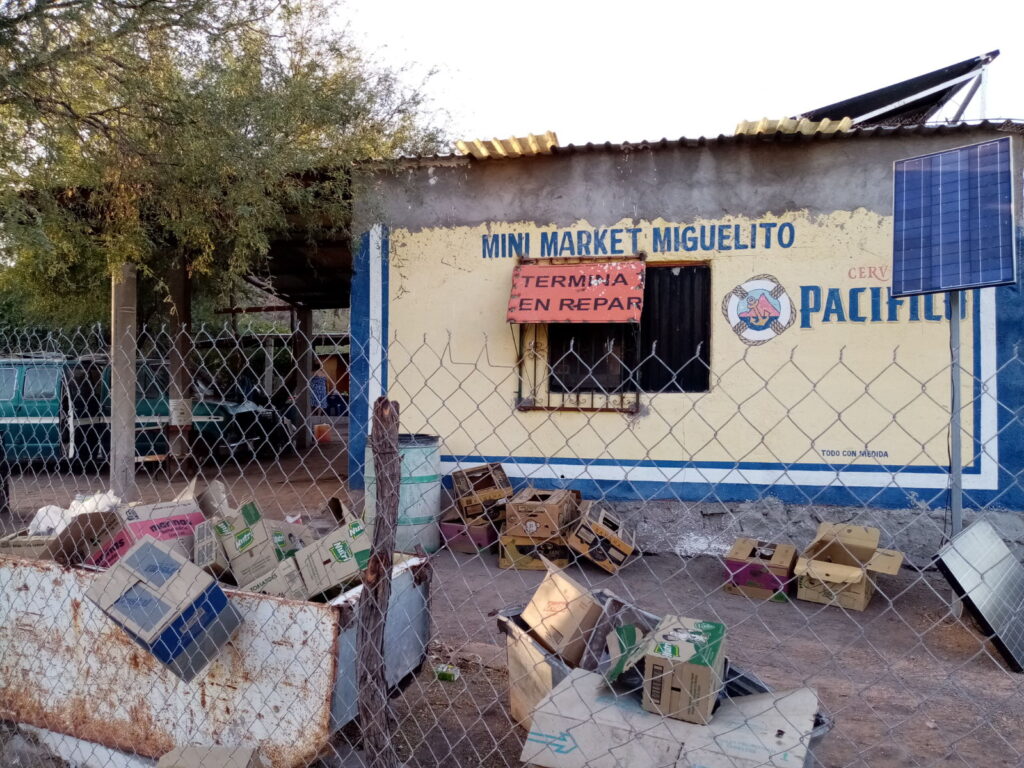
We walked around the edge of town as the late afternoon sun began to go down. I spotted huge black birds perched on the tops of the trees which I thought might be buzzards but apparently they are turkey vultures. There’s a line of them on the hilltop in pic below.
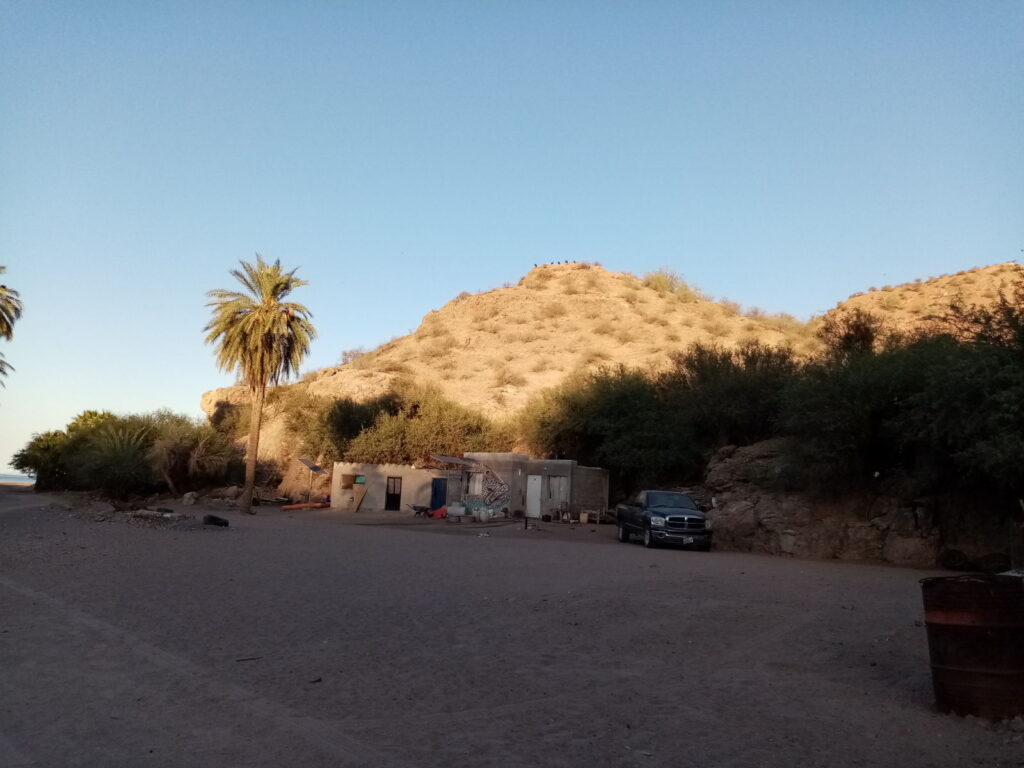
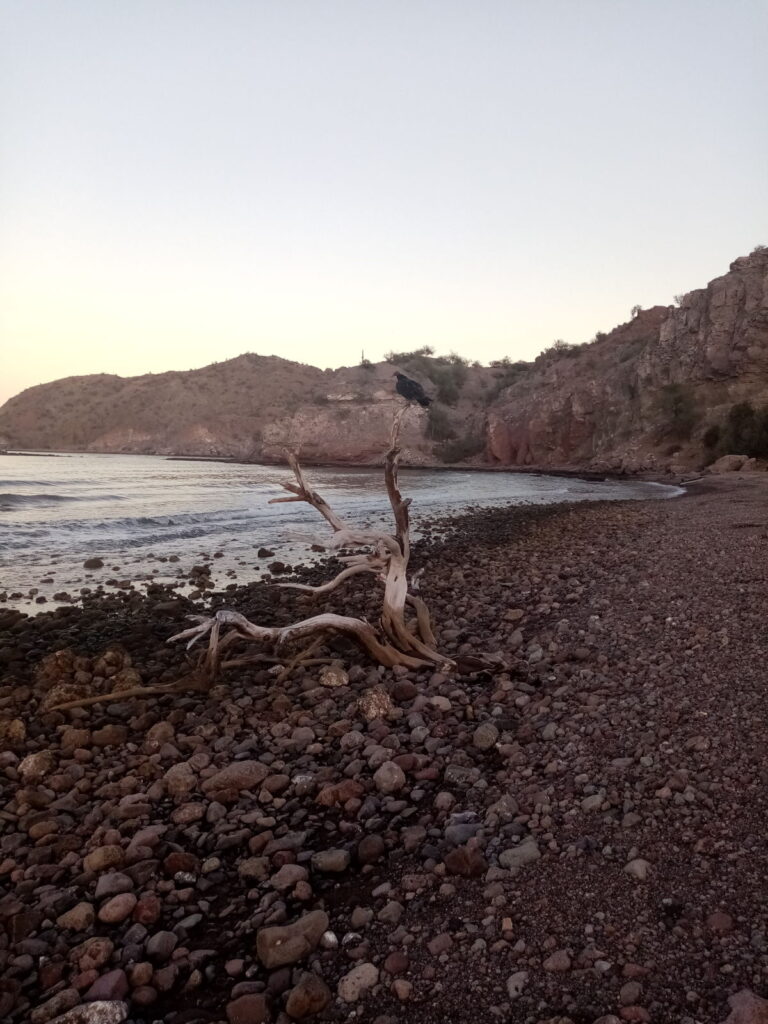
It was nice to see a group of children playing an old fashioned game of hide and seek among the trees and further on we passed a pig tied to a tree, and goats, chickens and horses roaming free. There was more to see but as we planned to stay a few days we headed back to the boat to watch the sunset from the cockpit. With the sun gone and no moon, the night was beautifully dark. Only a few twinkling lights came from the shore and later to my delight, some glorious phosphorescence shining under the water’s surface all around the boat.
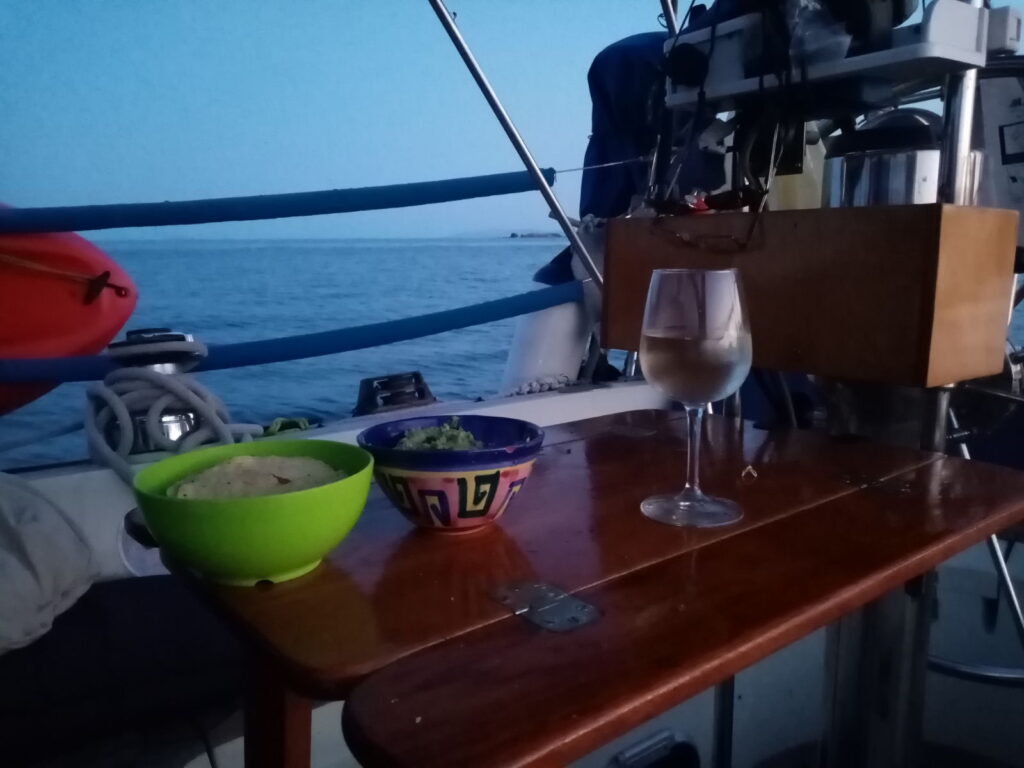
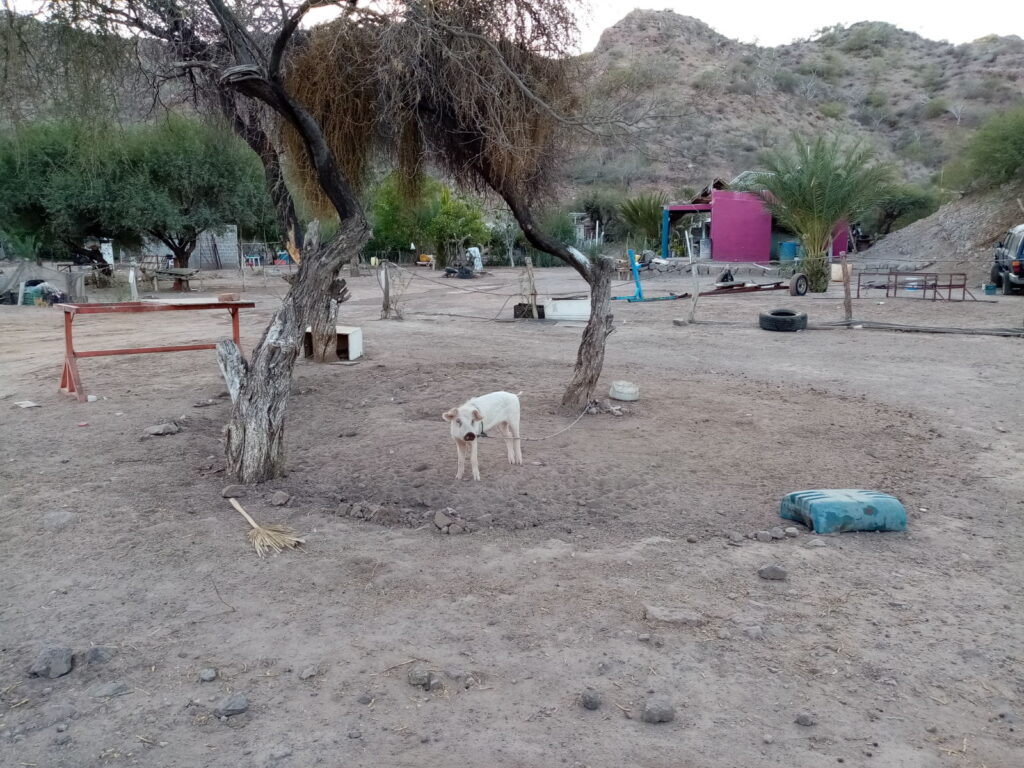
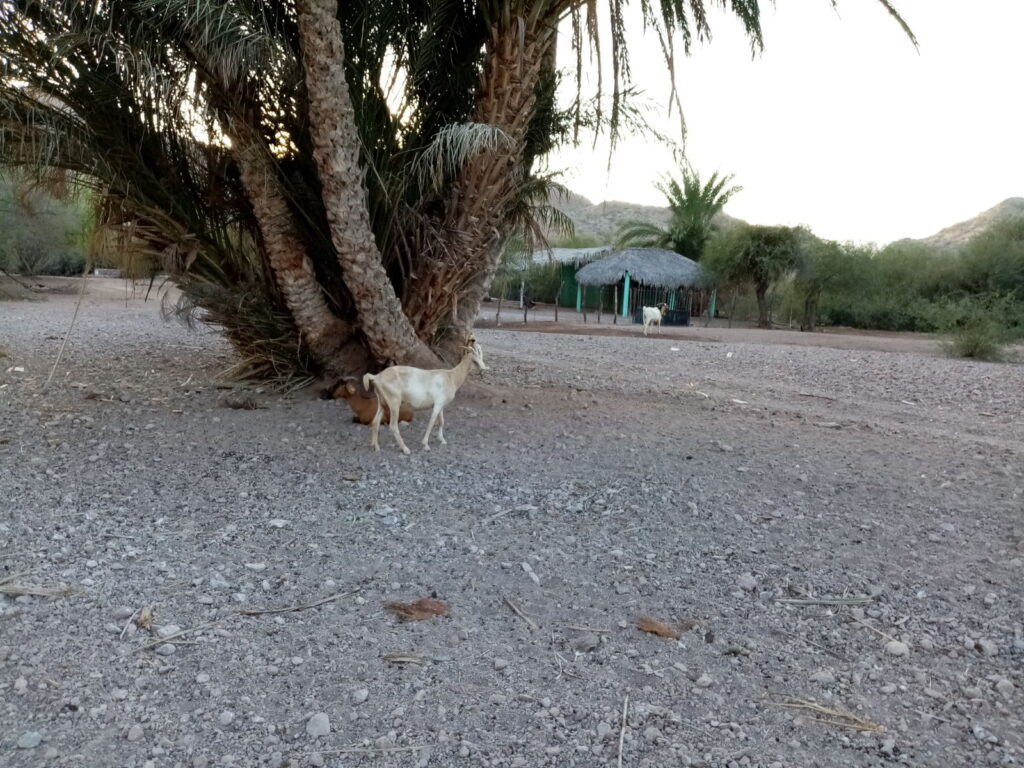
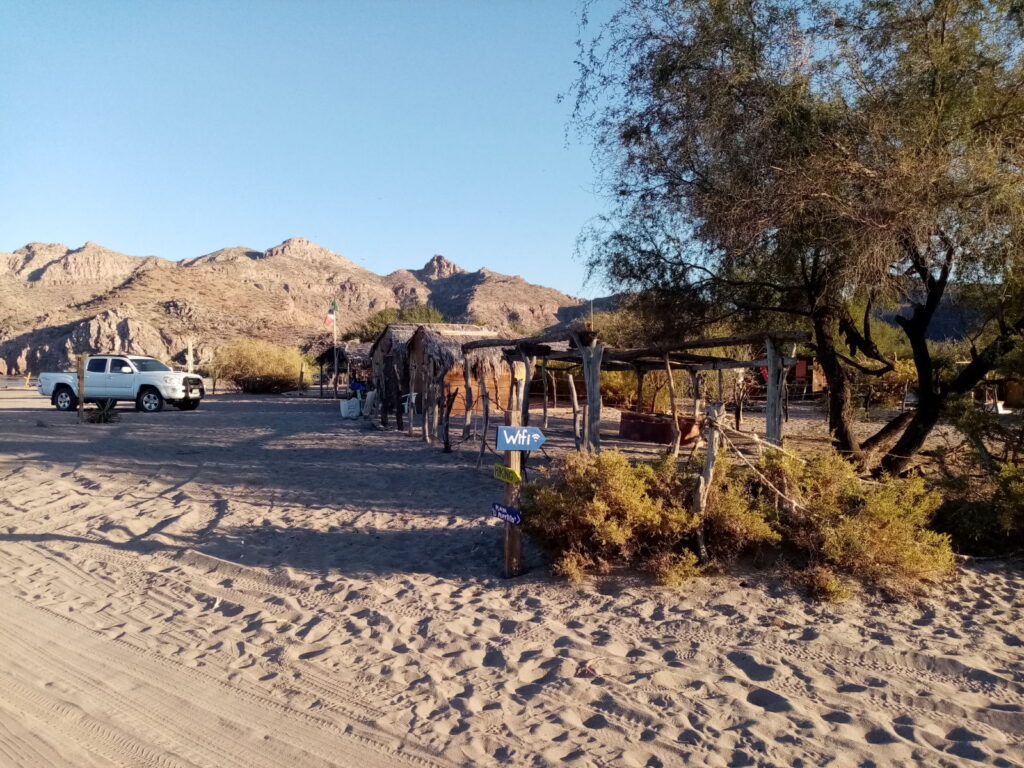
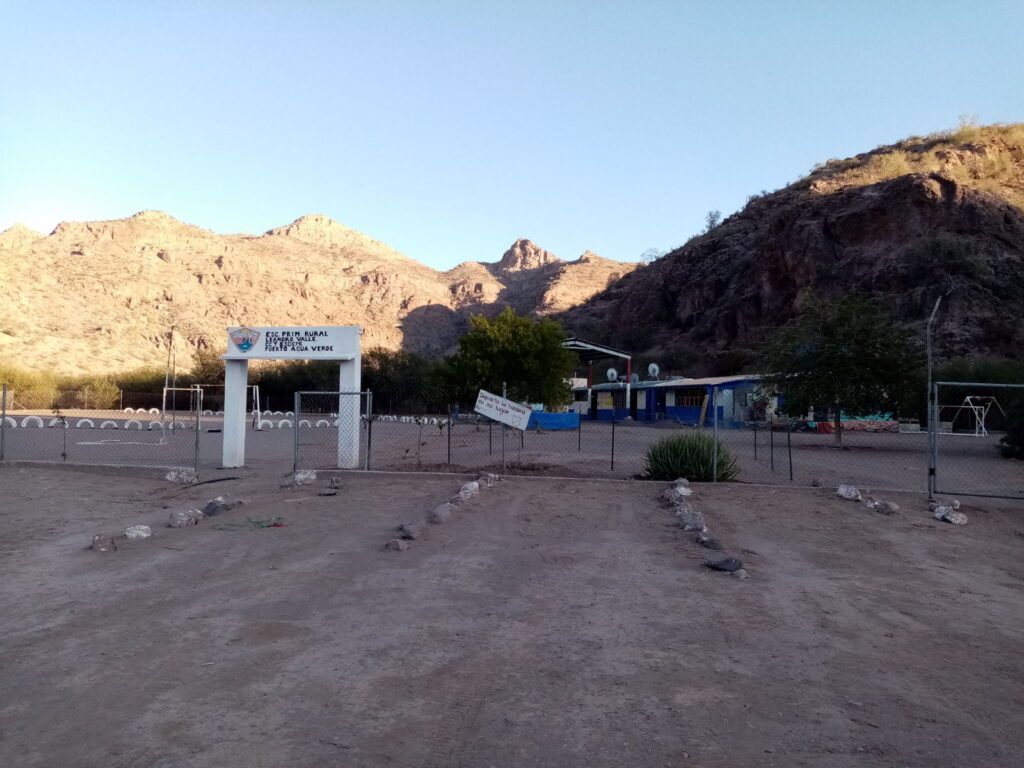
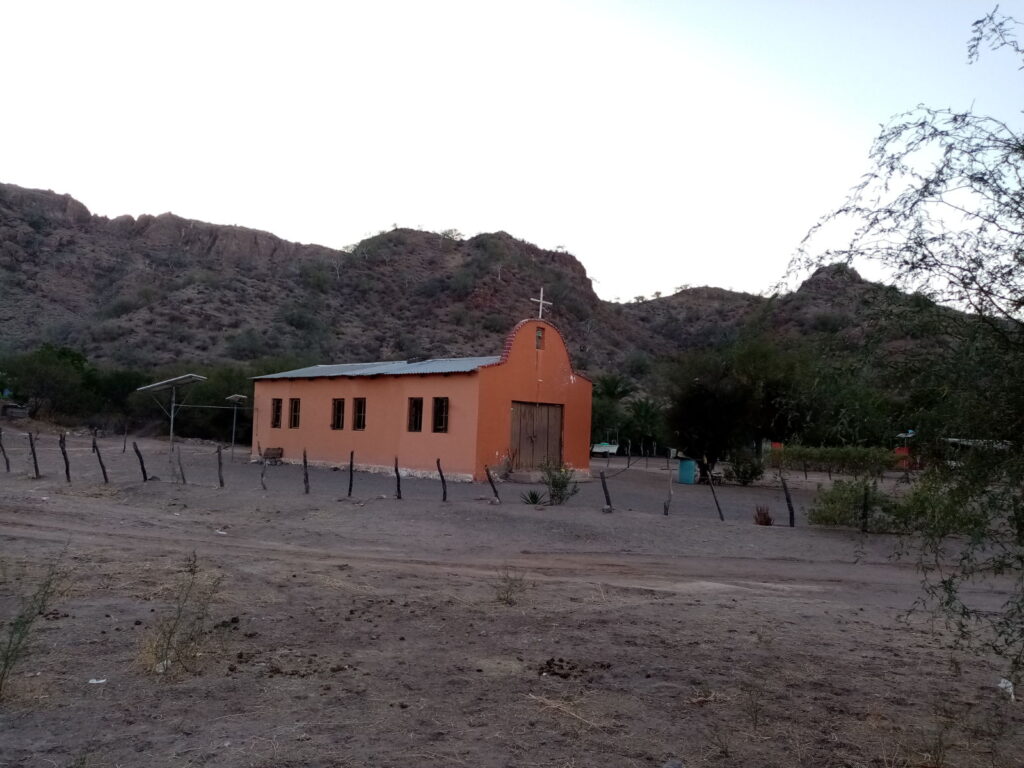
Over the next few days we made the most of everything Agua Verde had to offer. It was hot and sunny each of the five days we were there so this involved a fair bit of swimming and snorkelling. I was slowly building up to overcoming my aversion to snorkelling but initially I enjoyed cooling dips in the clear, still, warm and shallow water (ideal conditions for me). Looking from the dinghy I could see fish clearly but I knew I was missing out on seeing the ones that are deeper. I also enjoyed ambling along the shore while Paul snorkelled the area. A large white house situated on the isthmus (or puertito in Spanish) fascinated me because I couldn’t work out if it was a seasonal dwelling or someone’s permanent home. I waved to the man who was always sitting outside in a chair every time I walked there.
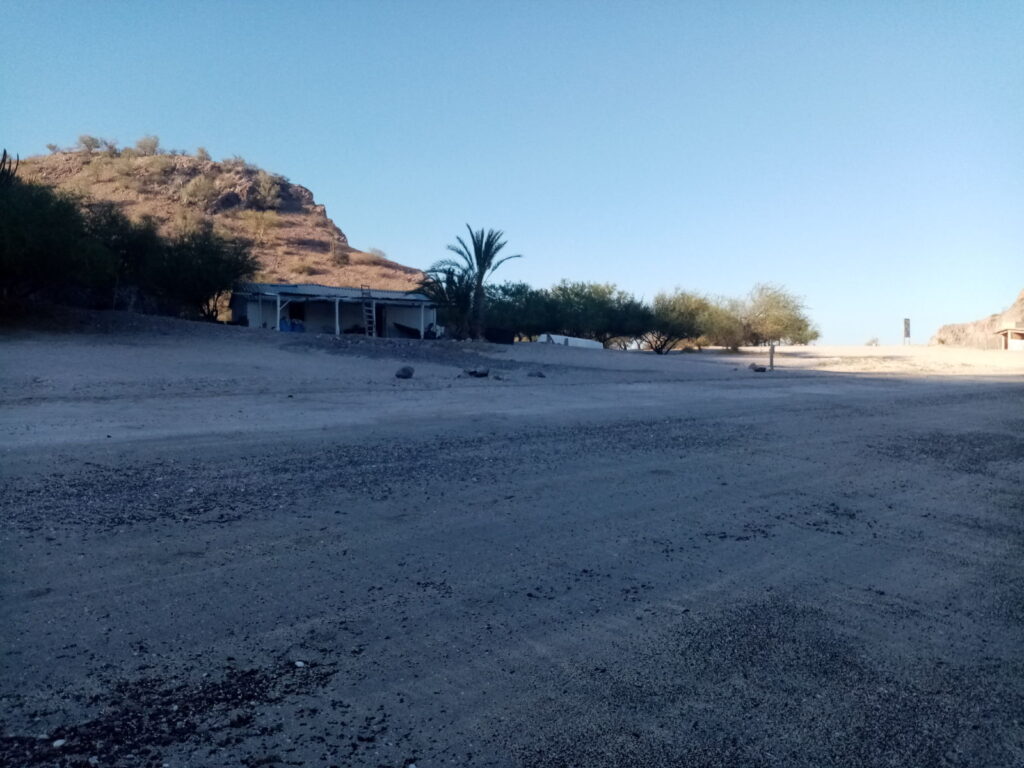
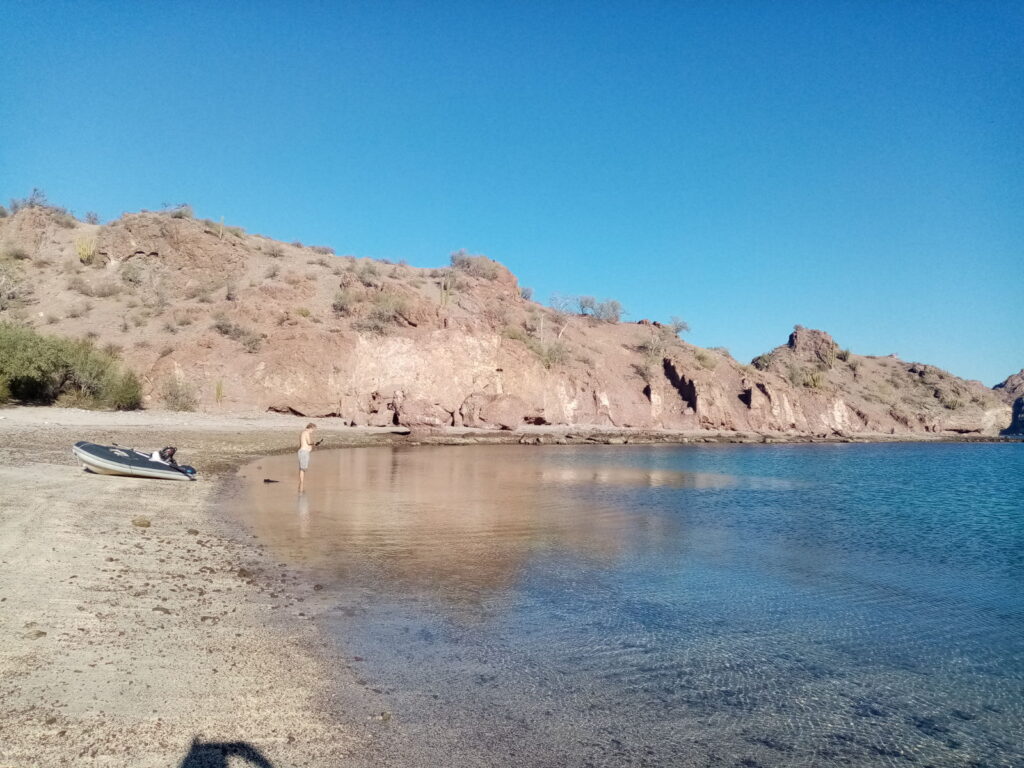
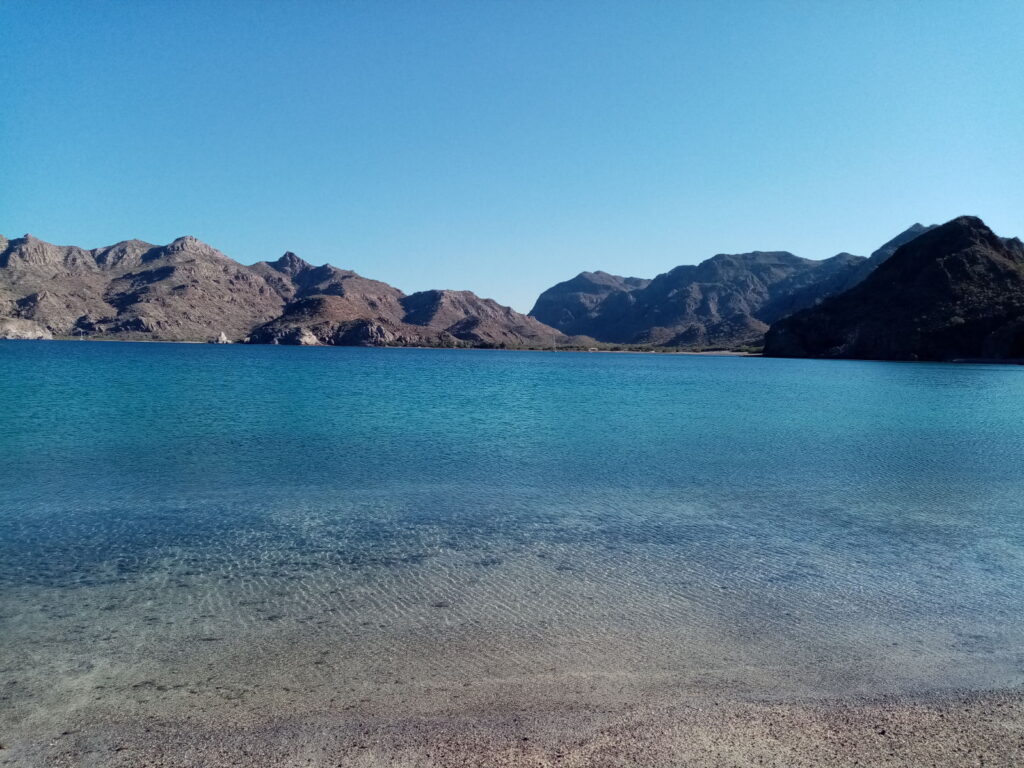
We had to move the boat after two nights anchored near the main beach because the infamous Agua Verde swell made it too uncomfortable to sleep. Our new position was nearer to the isthmus and was more picturesque as well as sheltered and calmer. One afternoon I had a long swim from one beach to another – the longest I had been in the water for years and felt my confidence in the water growing. Later that day however, wimp that I am I had to face another fear: the surf. Landing a dinghy when the waves are rough can be alarming. You have to time it exactly right in order to get ashore without landing on your back in the water flailing around in an undignified way. In some instances the dinghy can overturn, although Paul insists I’m overreacting. Nevertheless I have developed something of a phobia about it ever since a particularly rough landing in America. I could see and hear waves crashing on the shore, and wondered if it would be less traumatising to swim ashore! Paul took us to the calmest part, though and I managed to scramble out unsoaked.
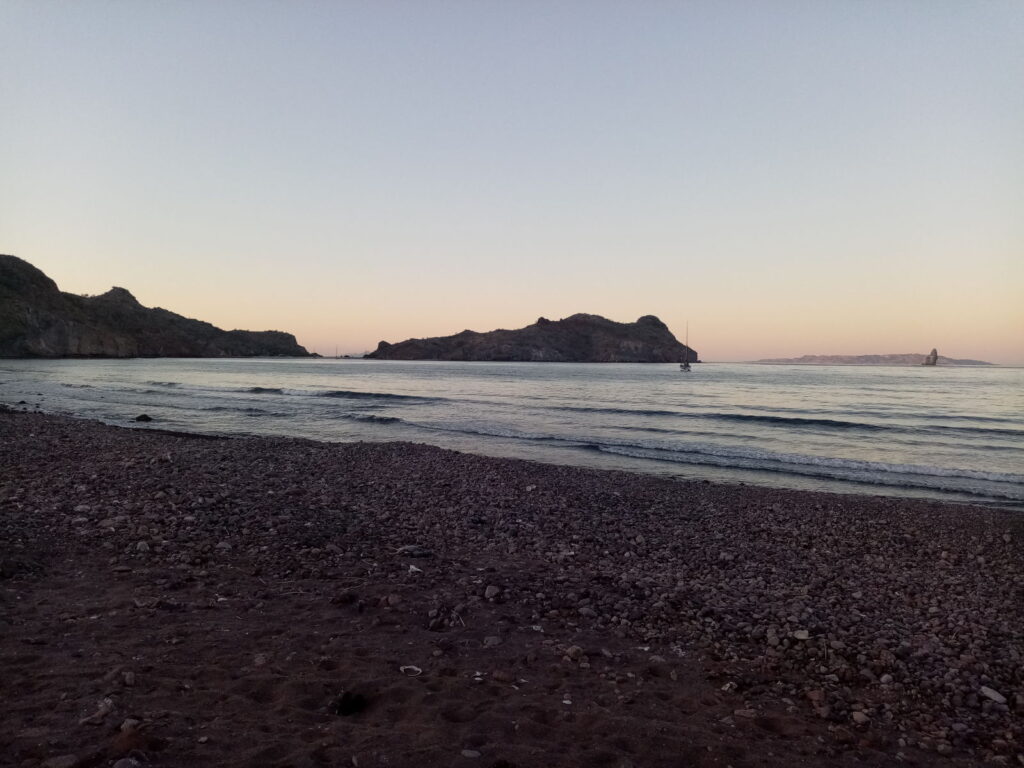
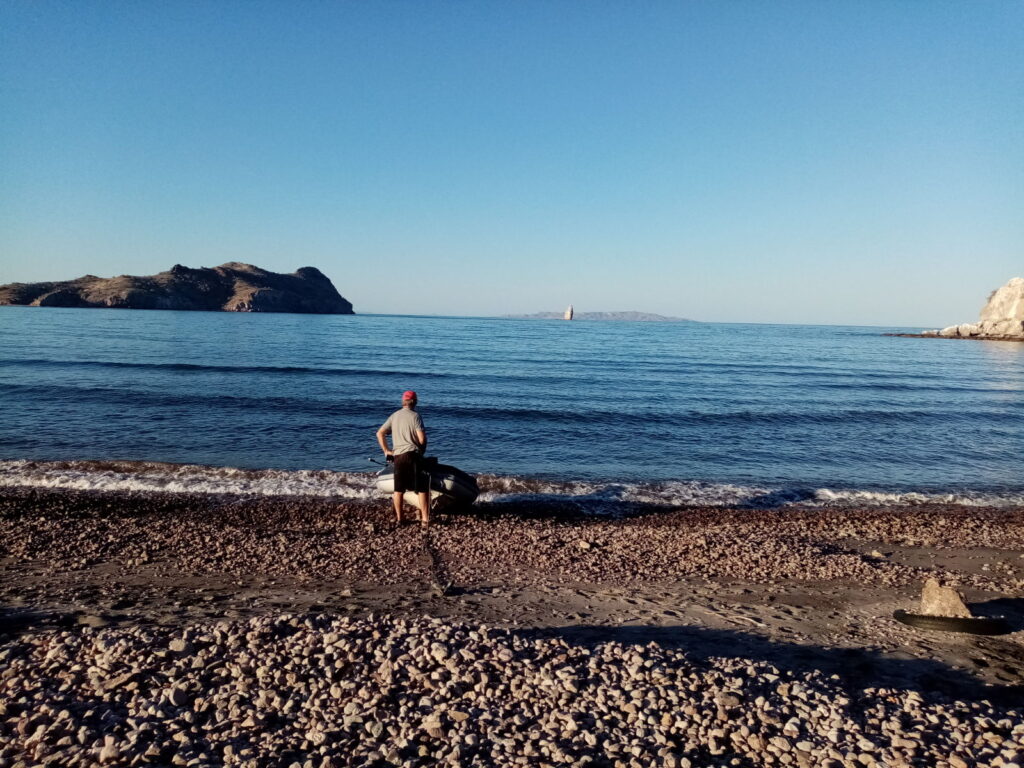
One day we went in search of the farm that Paul had bought goats’ cheese from last time he was here. When he described the route we needed to take, it went something like ‘take the rocky path until you come to the first mountain, carry on to the bigger, second mountain and when you reach the dried river bed, turn left at the top, follow the dirt trail…’, I couldn’t resist asking him if there was a rickety rackety bridge to look out for.
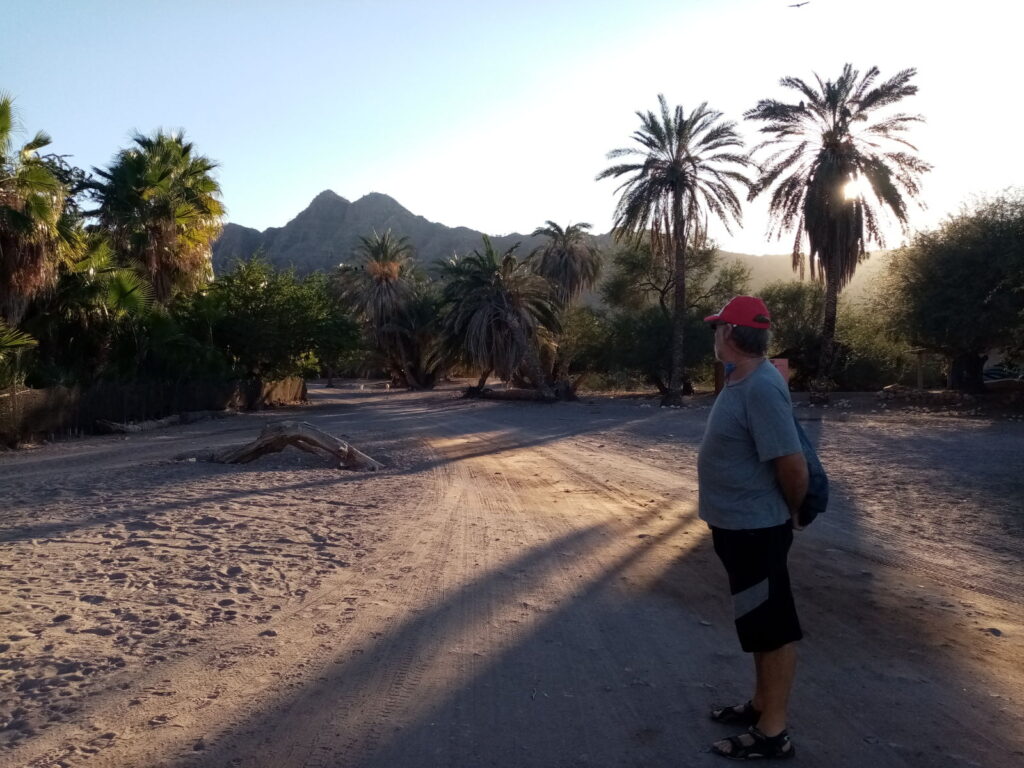
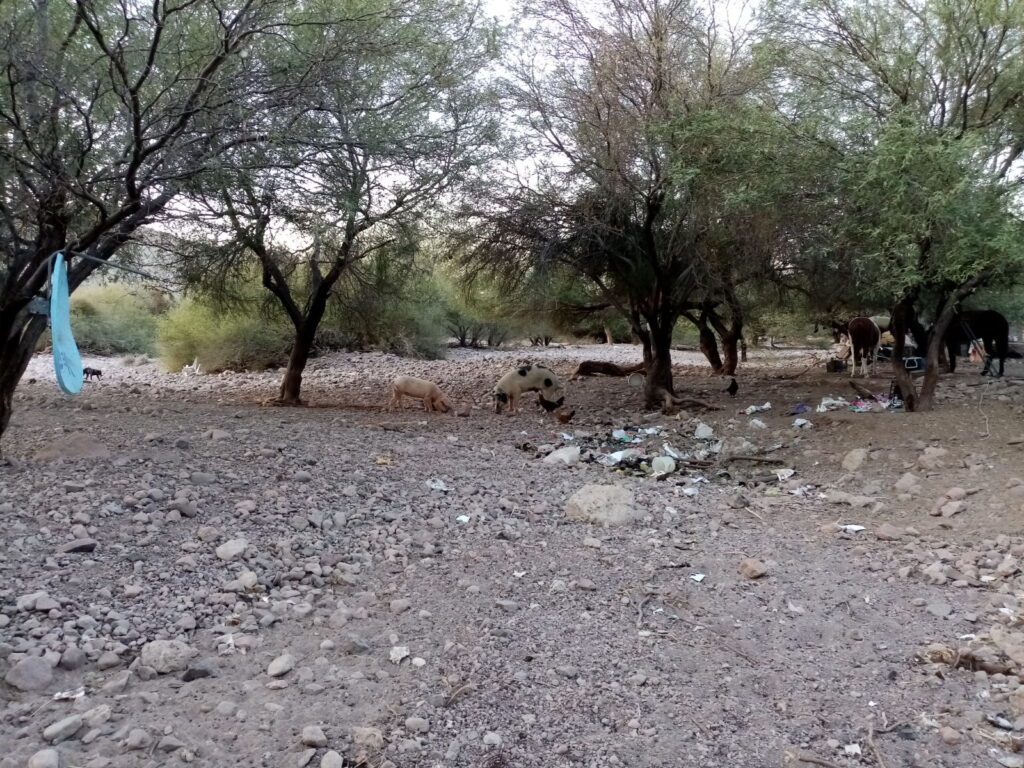
We arrived there after a thirty minute walk that did indeed match those directions. The farm was in one of the most remote places I have seen – a few ramshackle buildings on a sloping hill and a distinct lack of goats. People were seated at a table outside and I heard a little girl shout ‘Mama, gringos!’ I have learned since I’ve been here that gringos is a word used to describe Americans, so we don’t actually come under that term but it’s an easy mistake to make I guess. Paul used his Spanish to enquire if they had any goats’ cheese for sale. They didn’t, and we worked out they were suggesting we try the village shop, but they had none either. It was a nice walk anyway, and Paul got to practise his Spanish.
Agua Verde is ideal for snorkelling. Paul enthused about the things he’d seen so many times that I felt it was time to leave my hang-ups behind and literally plunge in. Late one morning, fully equipped with masks and a snorkel and mouthpiece I felt comfortable with, we took the dinghy to a shingly beach on the opposite side of the bay. All went well, I held on to Paul all the way and he pointed out the colourful fish, starfish and coral. I didn’t even mind the spiky sea urchins on the sea bed which were much larger than any I had seen before. Then I spotted a sea snake, looking for all the world like a fat, brightly-patterned colourful stuffed caterpillar – and that freaked me out. I learned then that it’s actually possible to scream with your head underwater while wearing a mask and snorkel! Paul quickly pulled me away to another area and the rest of the session was marvellous enough for me to do it again the following day, our last day there. Walking the shores we visit in the dinghy and beach combing is an activity that I particularly love. There are so many beautiful shells of all colours, shapes and sizes, along with intricately formed coral and it’s always fun to watch the shy little sand crabs burrowing out of harm’s way at our approach. Again, it was great to note that the beaches were clear of plastic and rubbish.
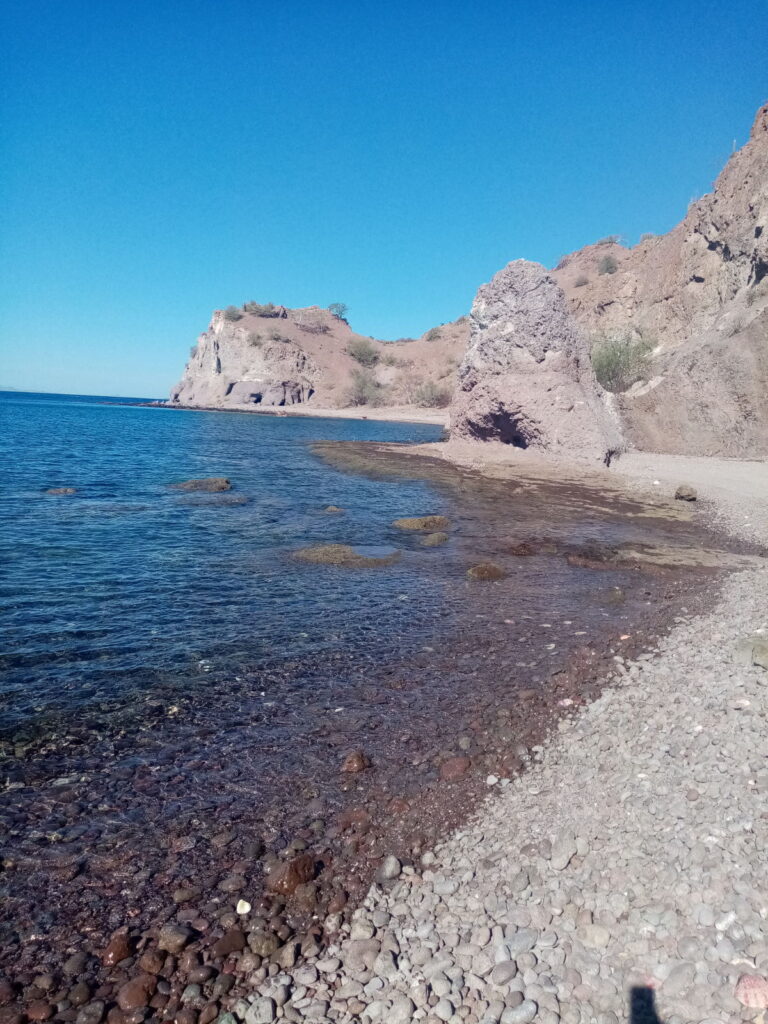
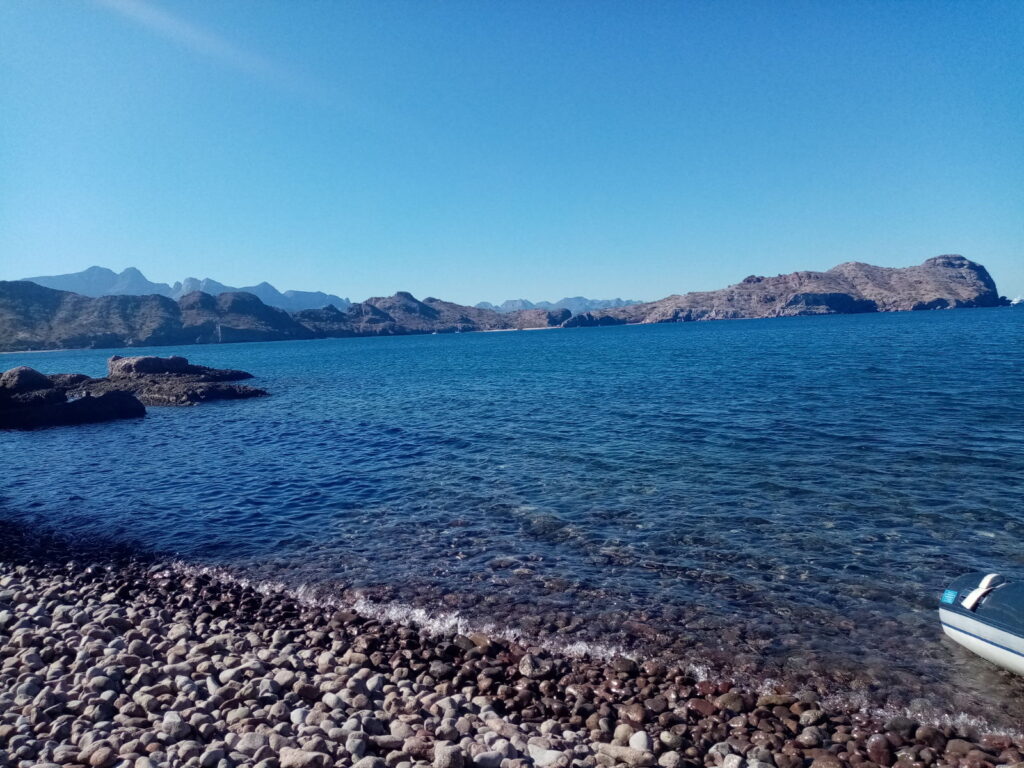
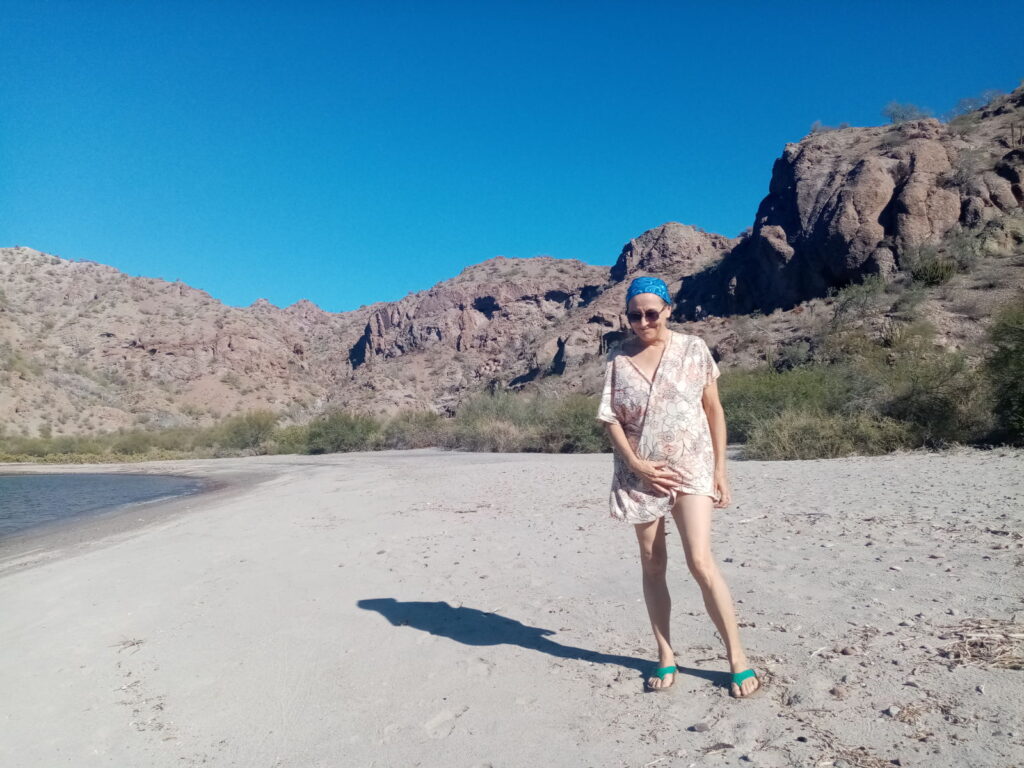
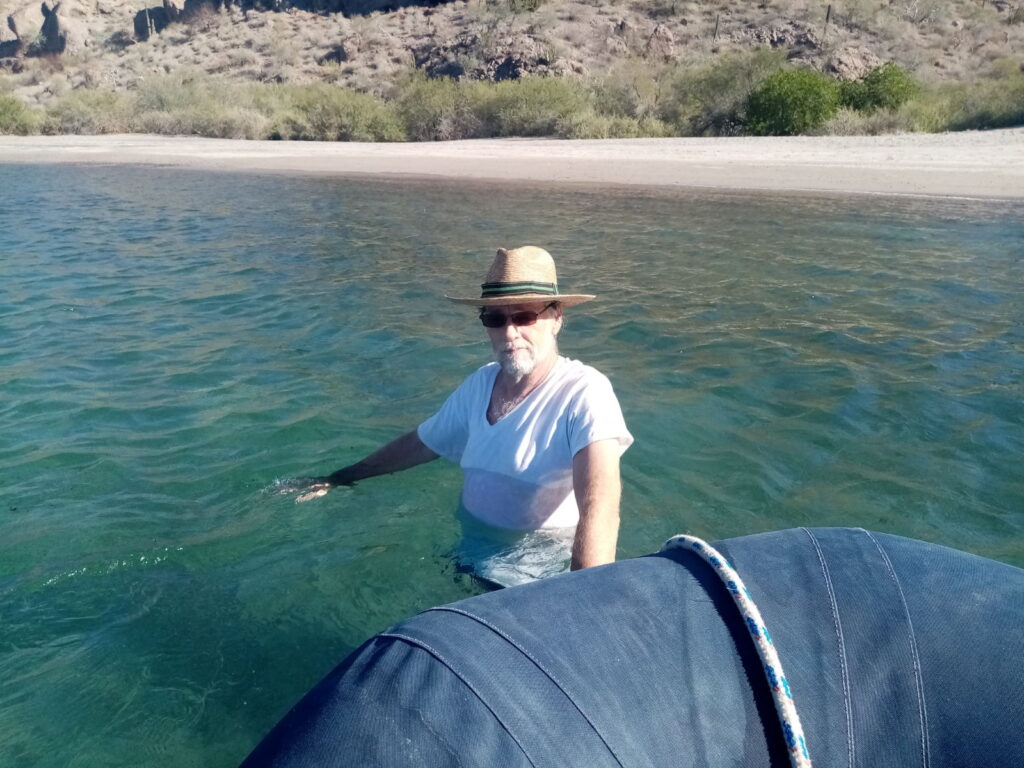
The haul out was booked for 1 o’clock on Monday 23rd November. We left Aqua Verde before 8 and wasted no time putting the sail up to make the most of the wind. That was great, but when we switched the engine back on a bit later, the autohelm wouldn’t work. All Paul’s usual fixes didn’t work so we had no choice but to hand steer for the rest of the way. This we did in 30 minute stints each, and it was easy enough because the route was straightforward and the weather was pleasant. By the time we got to the boatyard at Puerto Escondido it was very hot and Paul had to struggle a bit to reverse into the area where the lift was waiting, not having expected the need to reverse. A man in a dinghy kindly helped persuade it in and we had to climb a wall to get off while it was lifted out of the water.
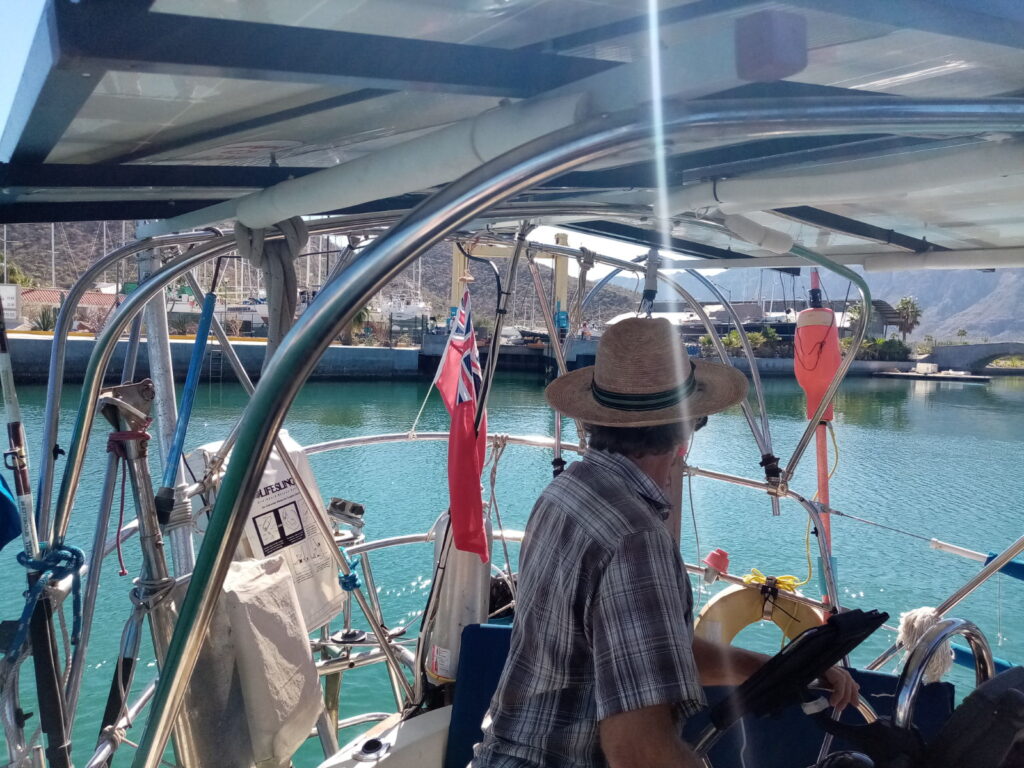
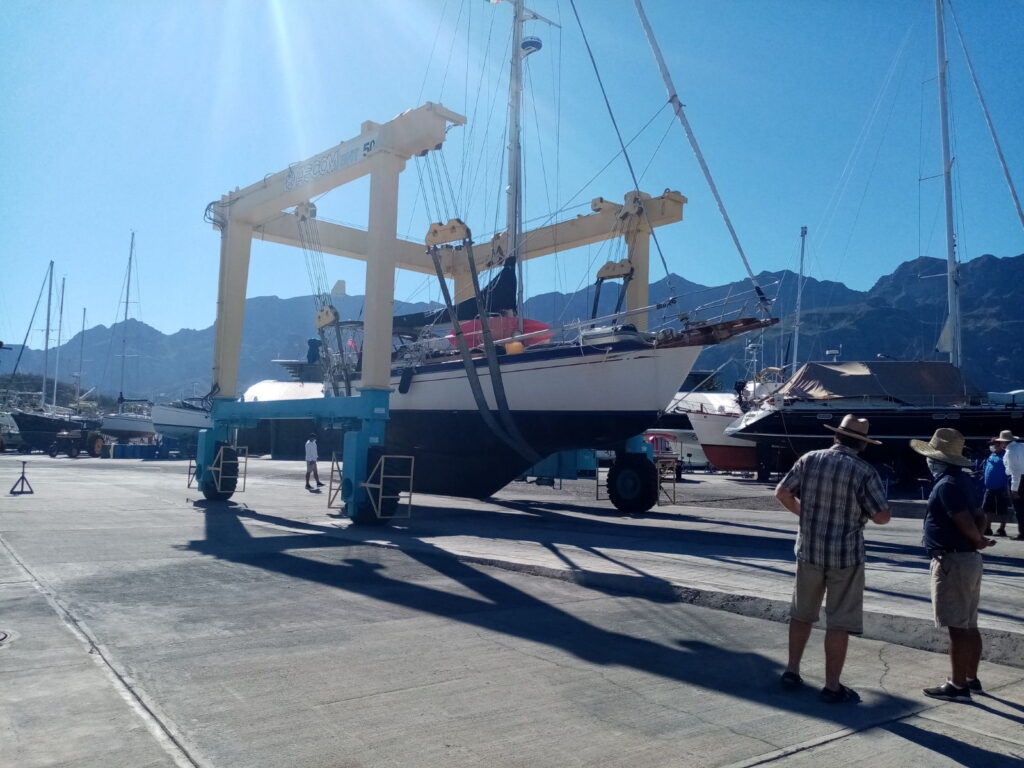
Once Sister Midnight was transported over to ‘the hard’ we took ourselves off to look around the facilities and then up to the marina bar while they made it ready for us to get back on board. There we enjoyed a drink and some guacamole and nachos overlooking the bay. The pic below shows how we entered and exited the boat for the week she was on the hard. The toilets were just around the corner but I made a point of limiting my liquid intake during the evenings. That ladder was steep!
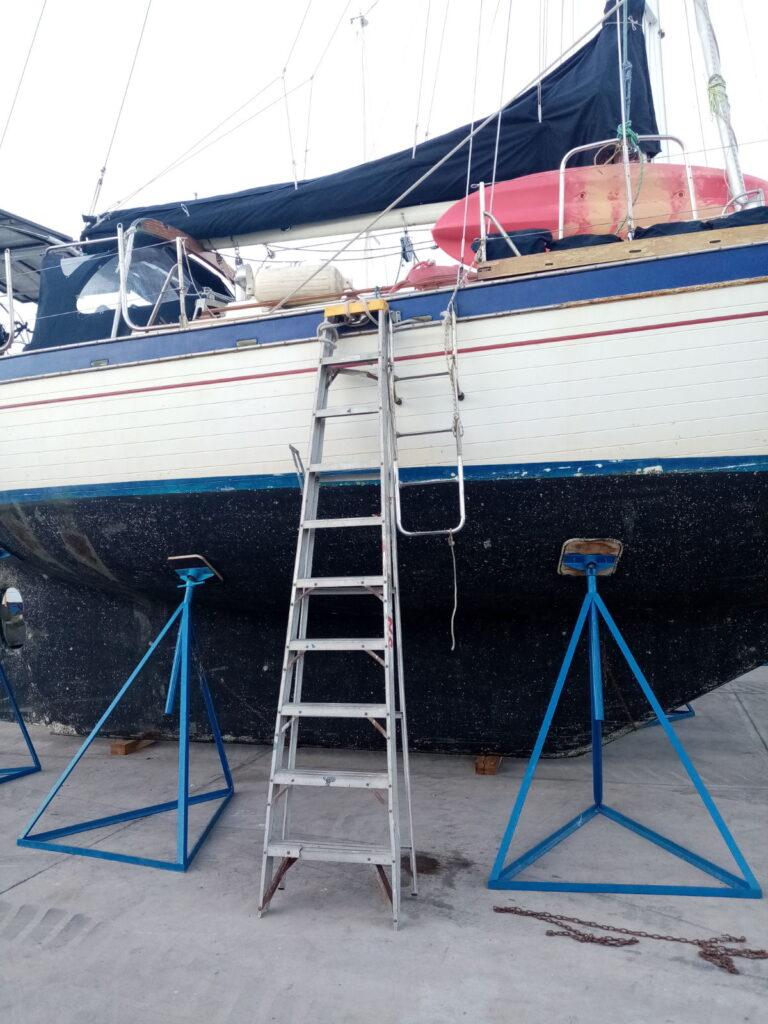
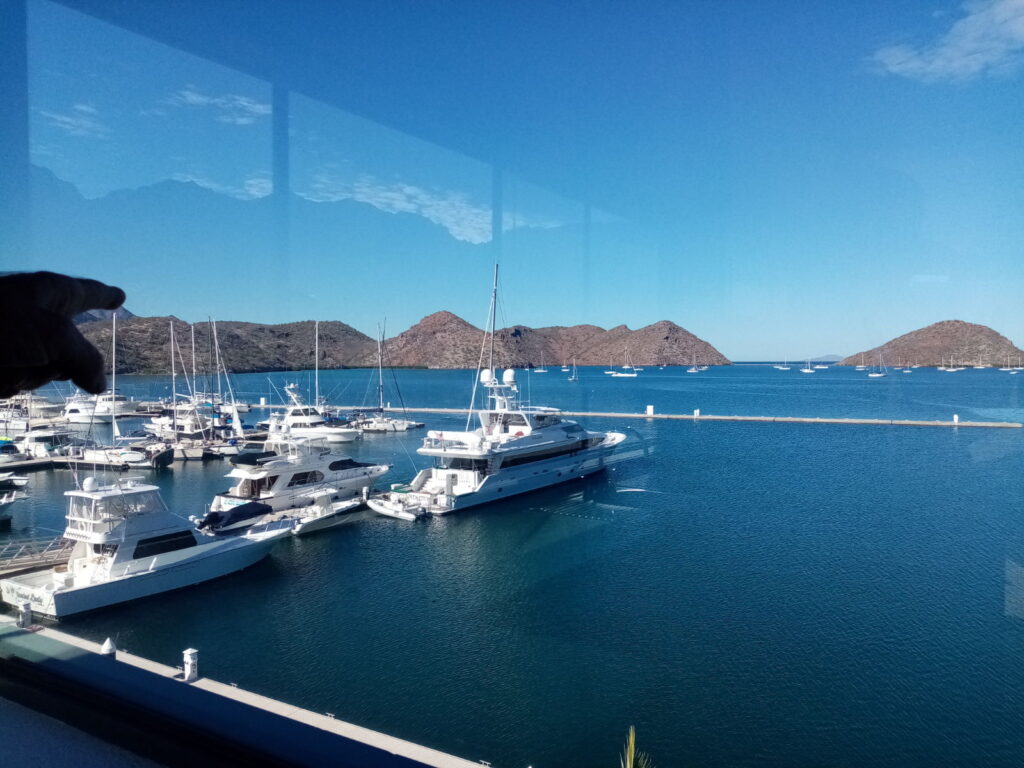
The marina had everything we needed. We ate in the restaurant a couple of times, used the laundry, shopped in the well-stocked, though expensive, shop and sat at the tables outside the shop using the Wi-Fi or reading while the men were working on the hull with noisy sanders and grinders. John Steinbeck had come to Puerto Escondido in 1940 and I wondered what it had looked like then. His description obviously bore no relation to all the modern conveniences around me but his account of the very shallow narrow entrance rang a bell with me, and the bright green mangroves he referred to are still there. Pic below of my vegan ‘buffalo wings’ which were battered cauliflower florets in a delicious sauce.
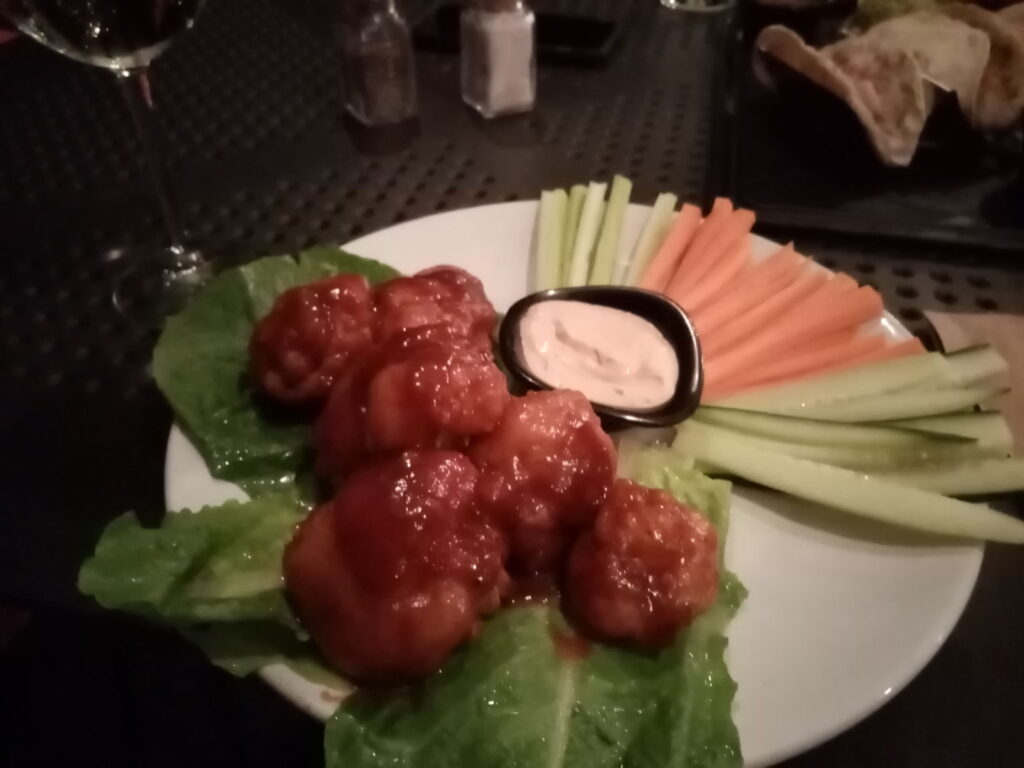
We were reunited with a couple of guys we met in Agua Verde, and one day I met Gerry’s sailing companion; Boomer the Bengal cat. He’s been travelling with Gerry on his boat for the last three years, is perfectly at ease on board and obeys commands in the manner of a dog (he even gets taken for a walk on a lead). He was very friendly too.
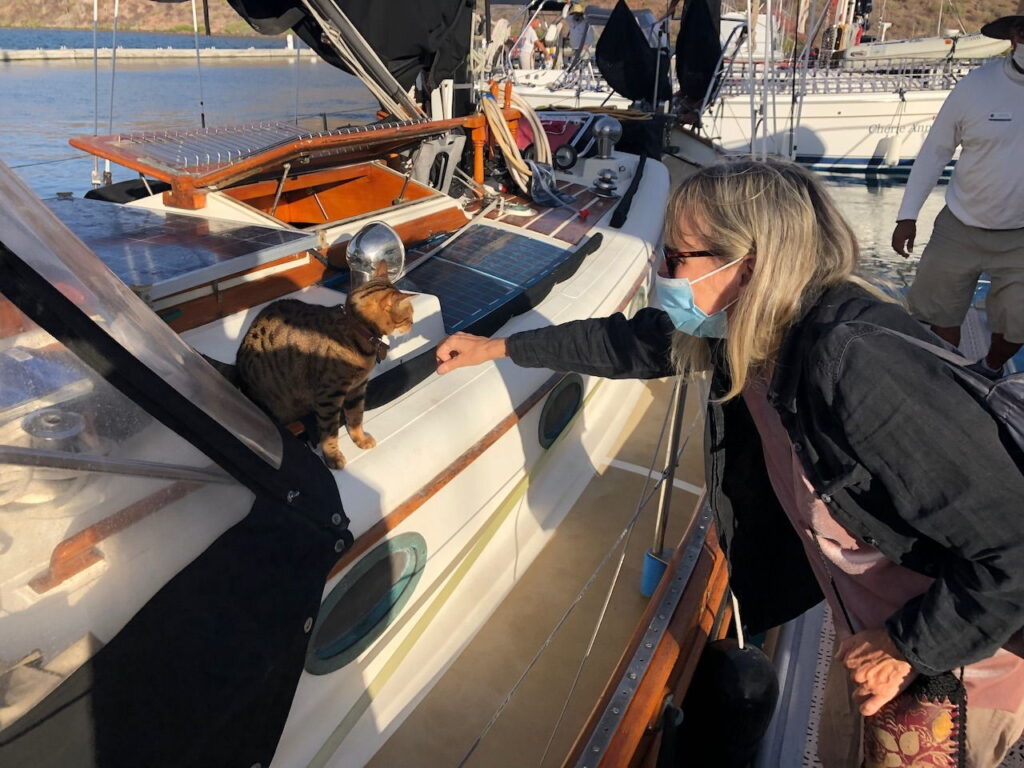
We had a fabulous day out in nearby Loreto when Paul hired a car on Friday 27th. The temperature had been gradually dropping since we’d arrived and when we arrived at the pretty seaside town, it was like a typical blustery bright autumn day on the UK coast. The sea was choppy and people were battling against the strong wind on the prom. We joined them and walked to the breakwater to see the sea lion construction and sat a while watching the birds diving into the breaking waves for fish.
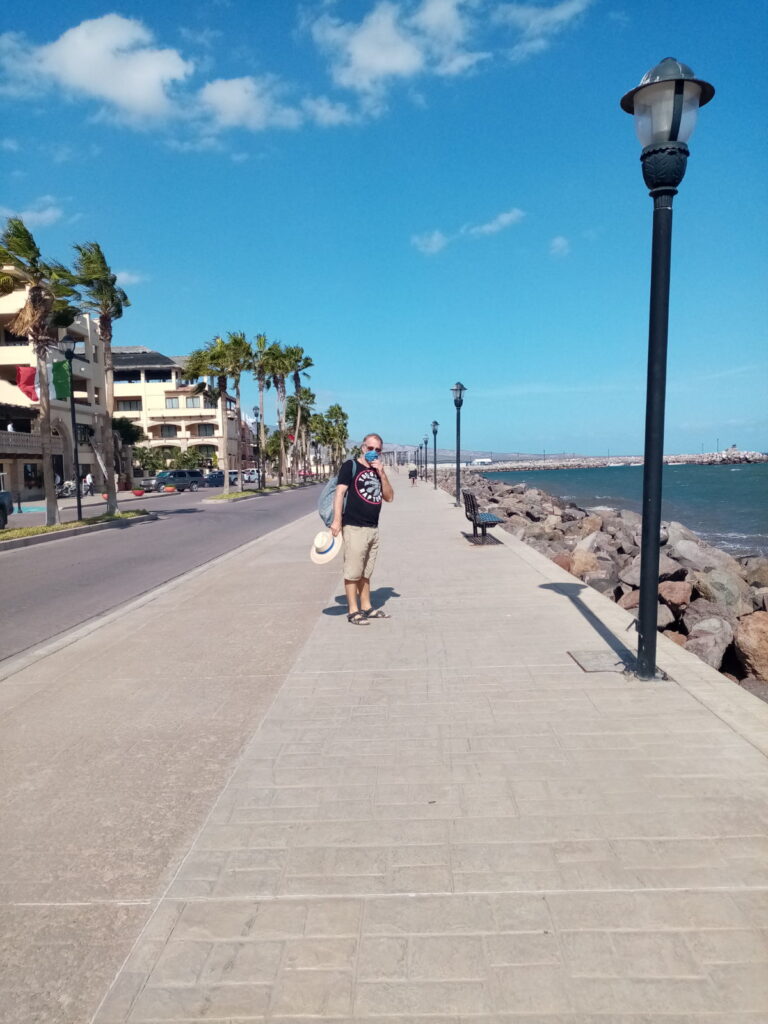
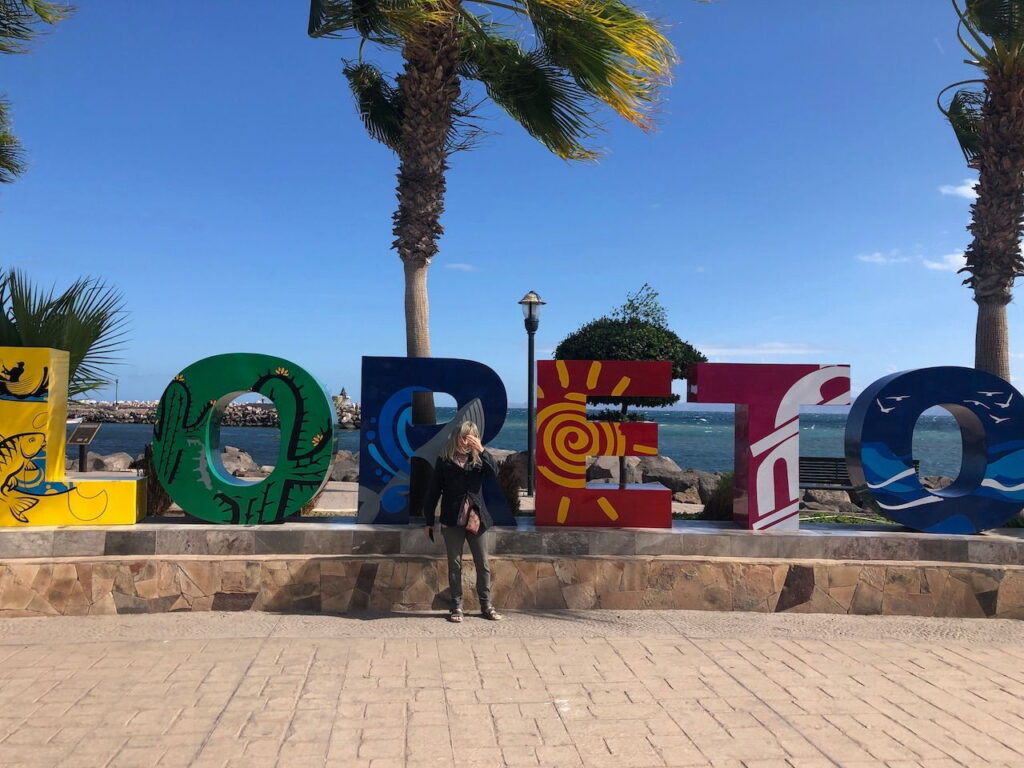
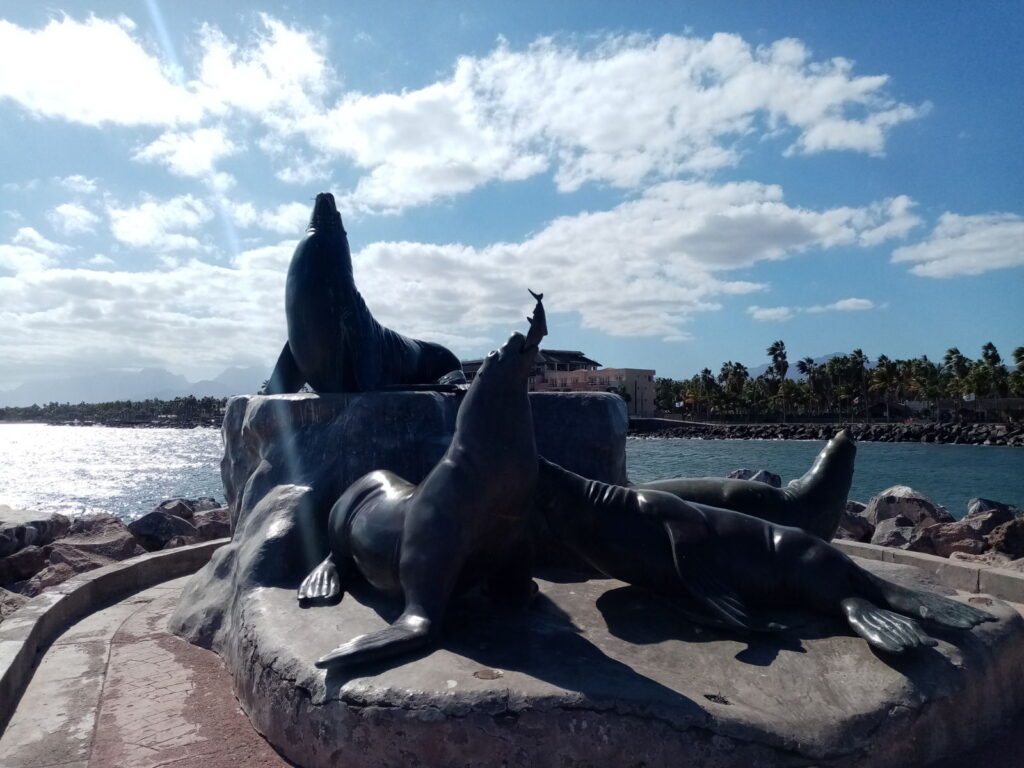
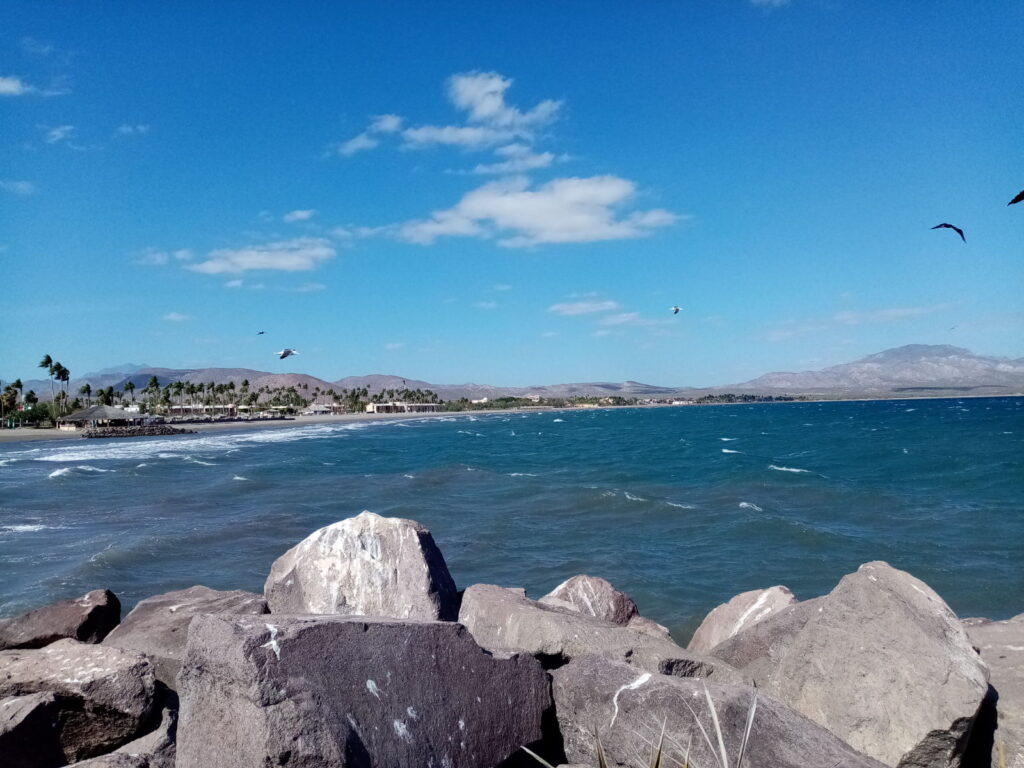
After browsing the shops and the town square, we found a great place to have lunch in a shaded flowery area of the plaza and then visited a couple of supermarkets to make the most of having a car to transport heavy items back. I didn’t look forward to carrying them up the ladder to the boat though.
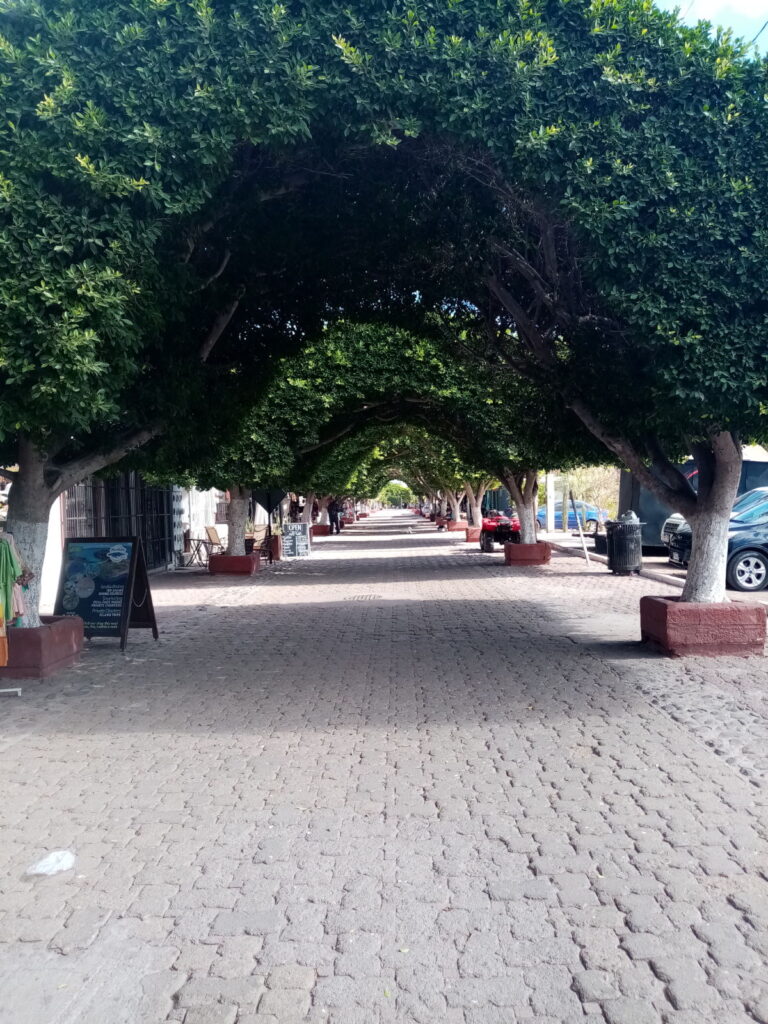
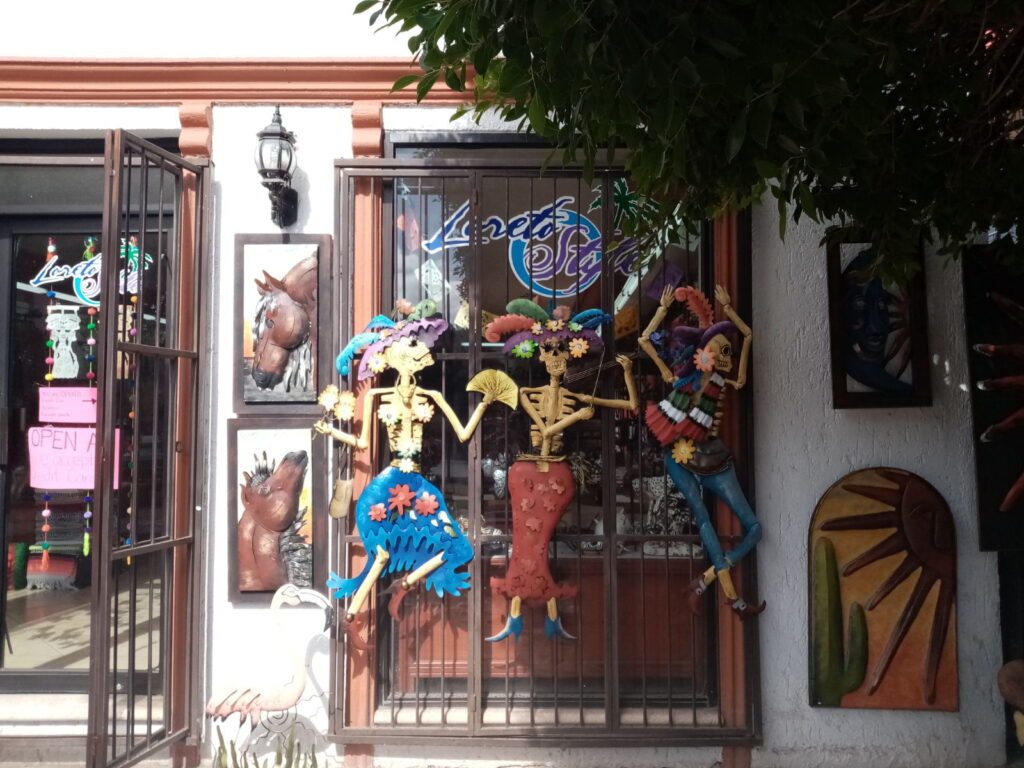
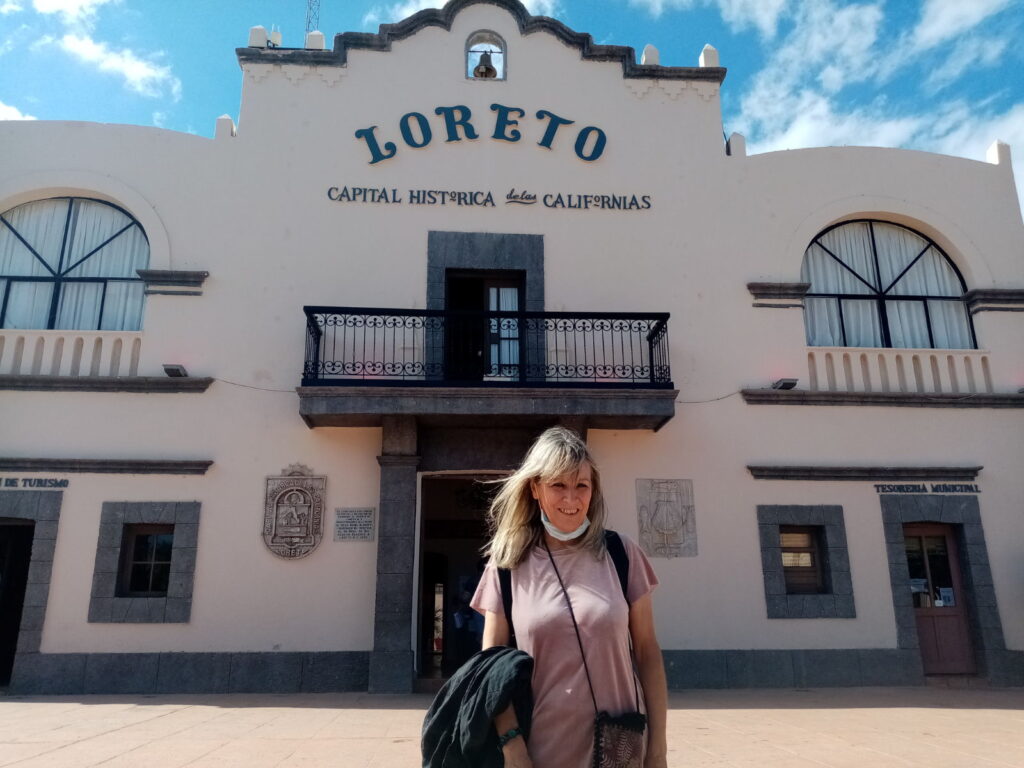
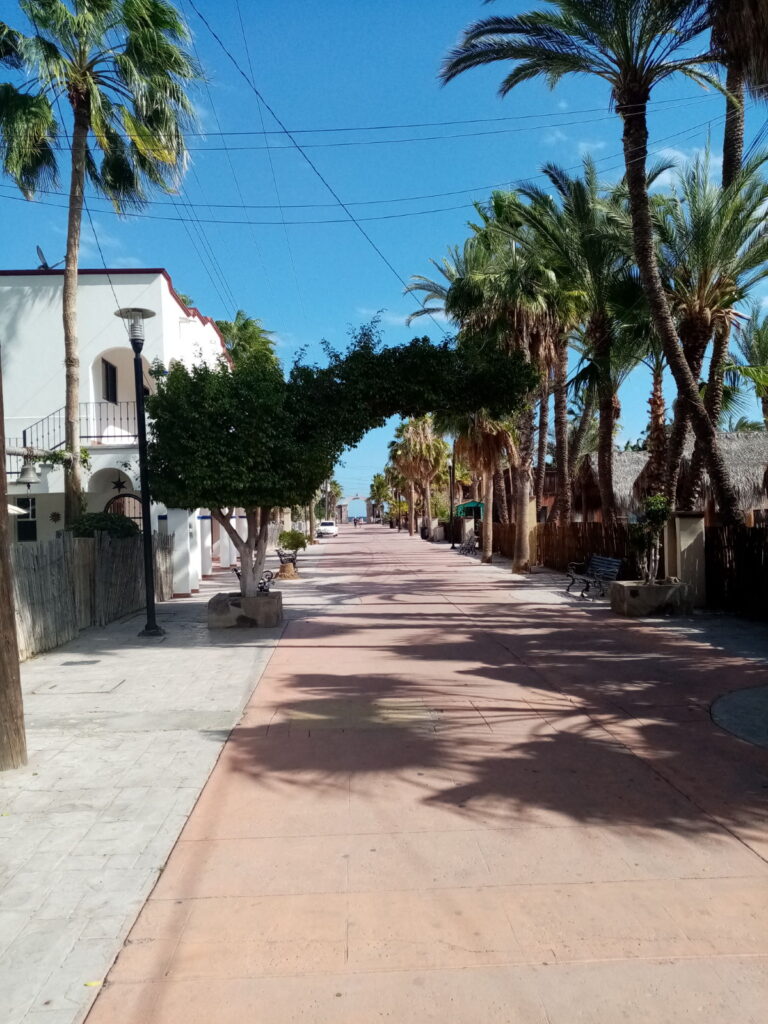
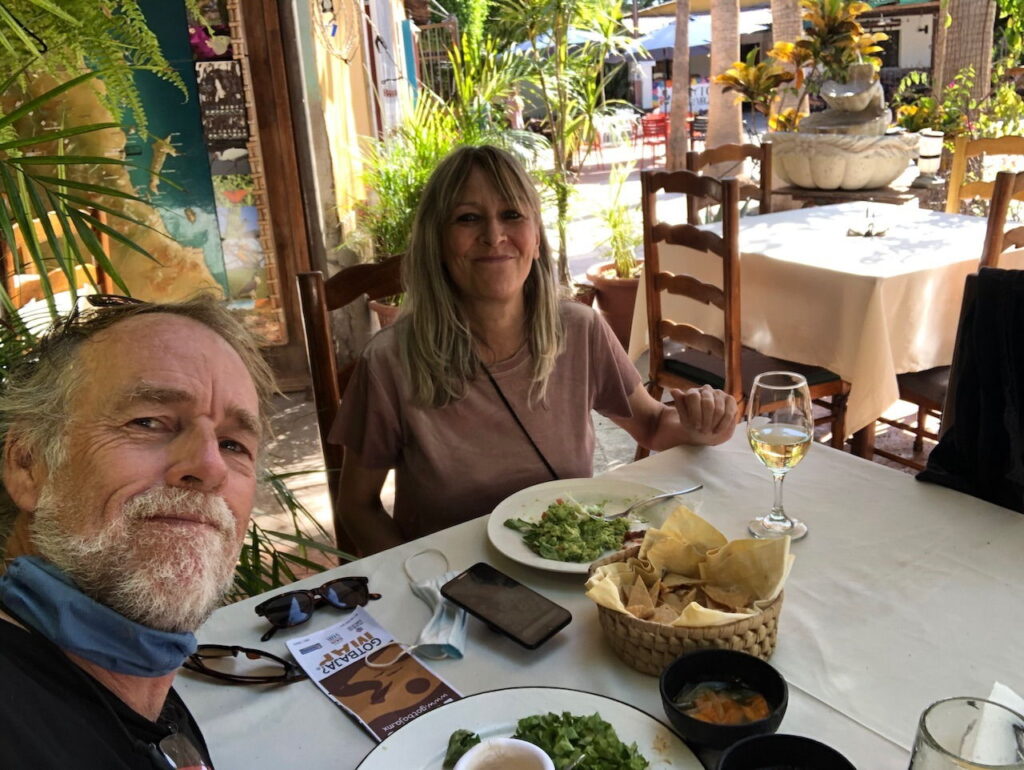
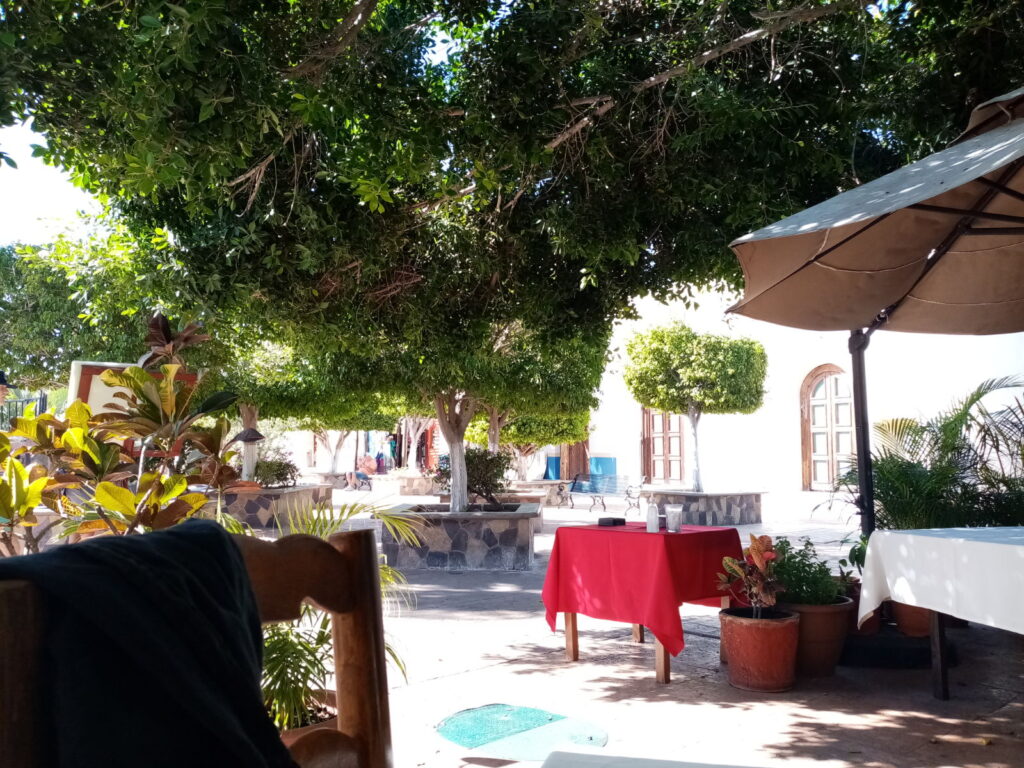
Loreto lost its status as Baja’s capital when a destructive hurricane in 1829 forced the government to move the state’s capital to La Paz. Its other claim to fame is that it was the first place in the Californias to establish a mission. There is a lovely old church (Mission of Our Lady of Loreto) to mark the occasion in the centre of town proudly bearing the date of that historic mission (1697). We were headed for the second oldest mission, however which proved to be the highlight of our time away from La Paz (for me anyway).
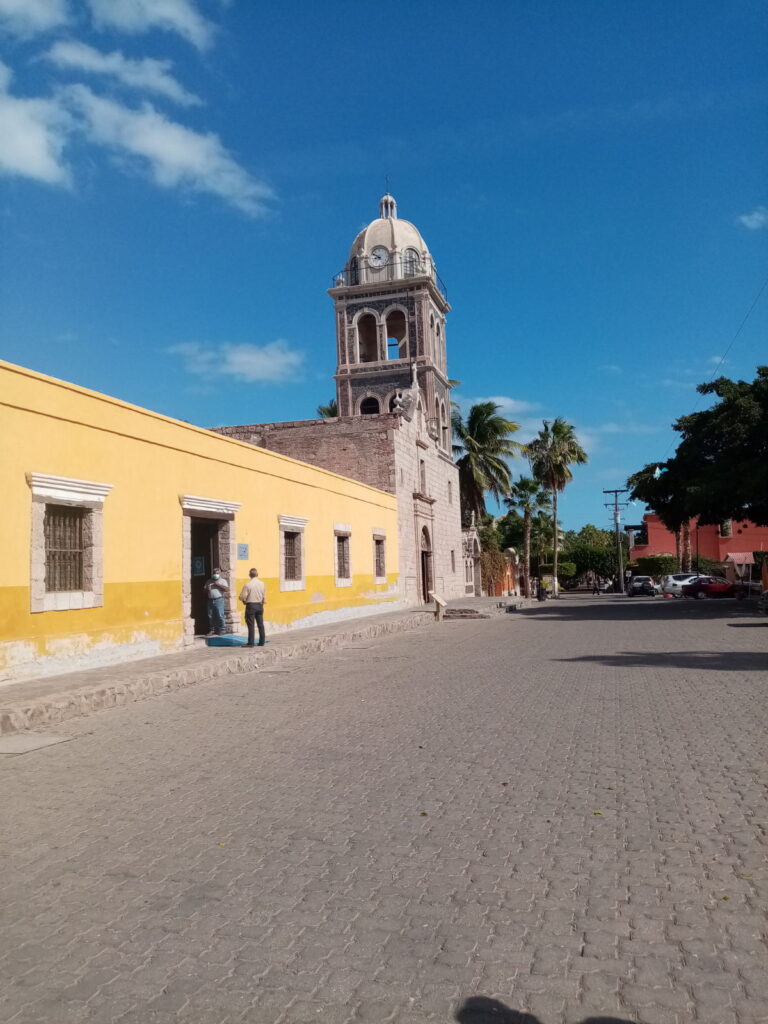
San Javier village is a small community about an hour and a half away from Loreto and to get there we had to drive up a mountain in the beautiful Sierra de la Giganta range for most of that time. It was simply stunning. Every time we rounded a corner on the climb, the view was another awe-inspiring one. It was all the more exquisite for there being no other vehicles on the road for much of the way. The landscape was arid desert land, cactus-strewn and littered with rocks. In some parts, sections of the road had tumbled down the steep cliffs, narrowing it considerably. Paul, who had visited it in the summer told me that a car had been visible at the bottom of one of the valleys due to the crumbling roads. I was glad I wasn’t driving! The higher we got, the more remote it became. Dried river beds and spindly, small trees and bare bushes were a sign of long periods of drought and I was finding it hard to believe there would be any village at the end of the drive, never mind one with a population of 200. When we got there I was surprised to find it a lot larger than I expected. Even though only one primary street runs through the village we passed signs for the school, cathedral, police station, places of interest and a car park. Several cars were parked and I wondered how we hadn’t seen any traffic apart from one motor bike on our way up. The street was lined with a couple of small shops, a restaurant and cafes and a few houses.
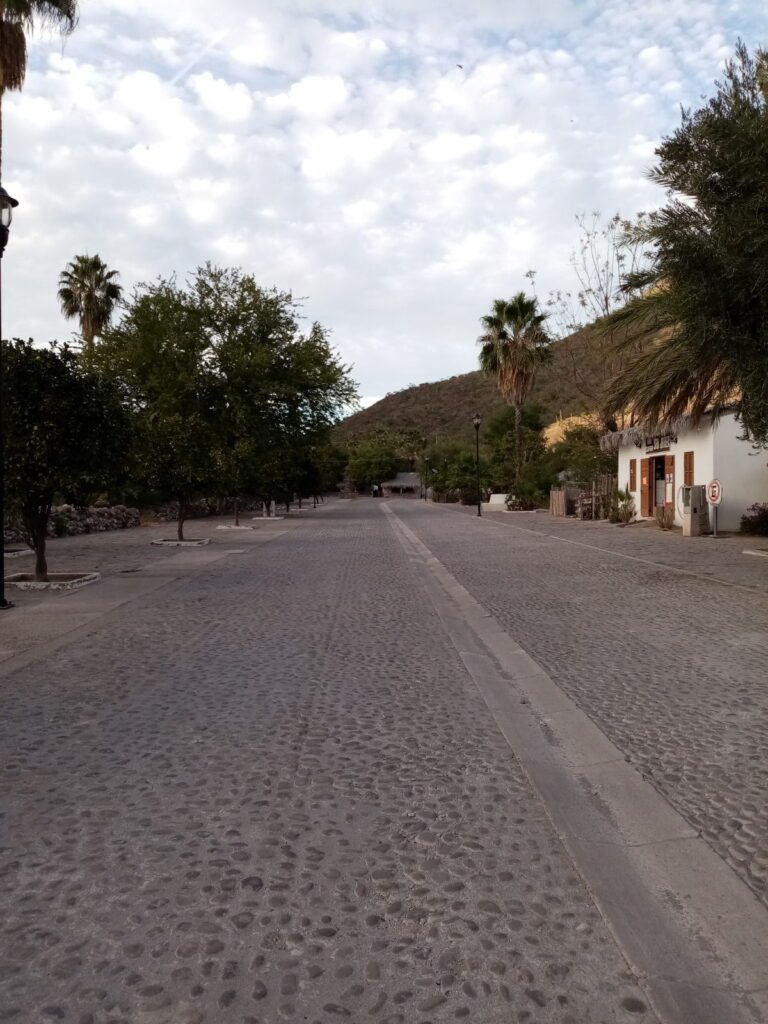
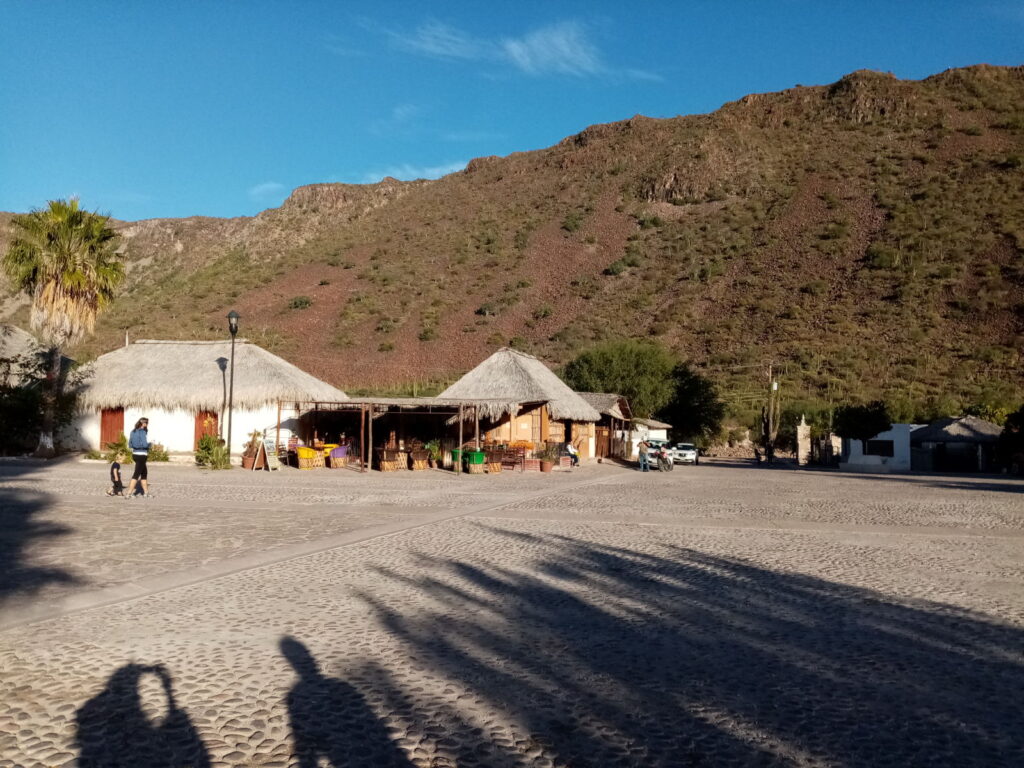
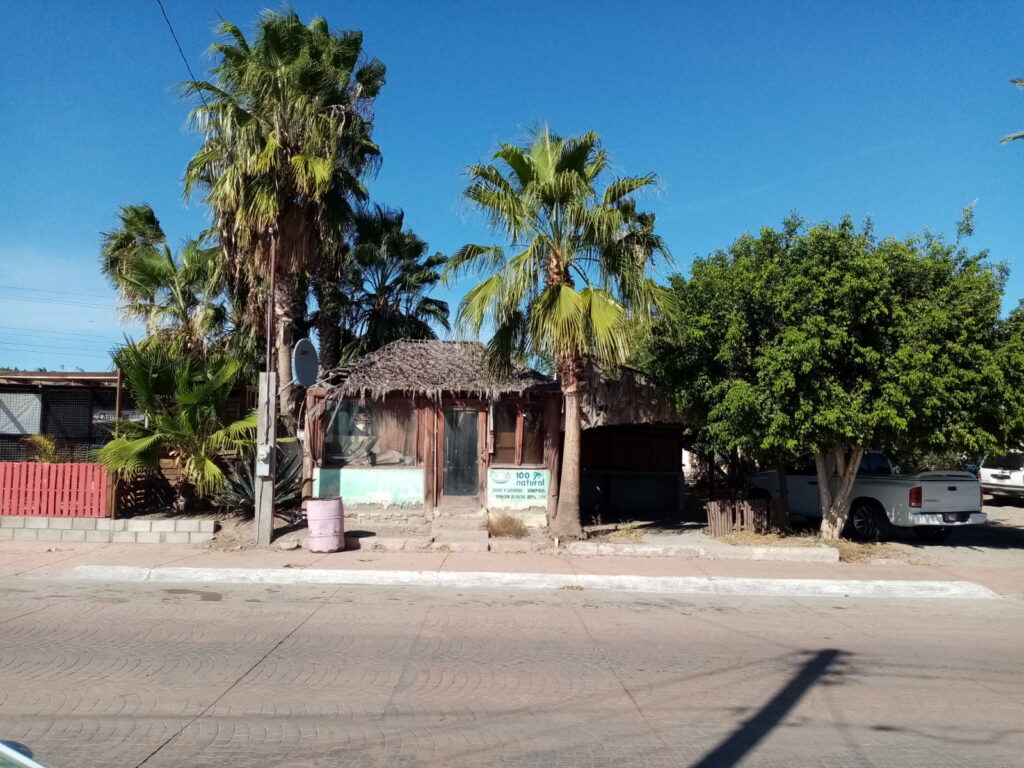
Before visiting the cathedral, which looked beautiful in the fading light, we walked the small distance to see the spring that supplies water to the village and to look at what purports to be the oldest olive tree in the Americas.
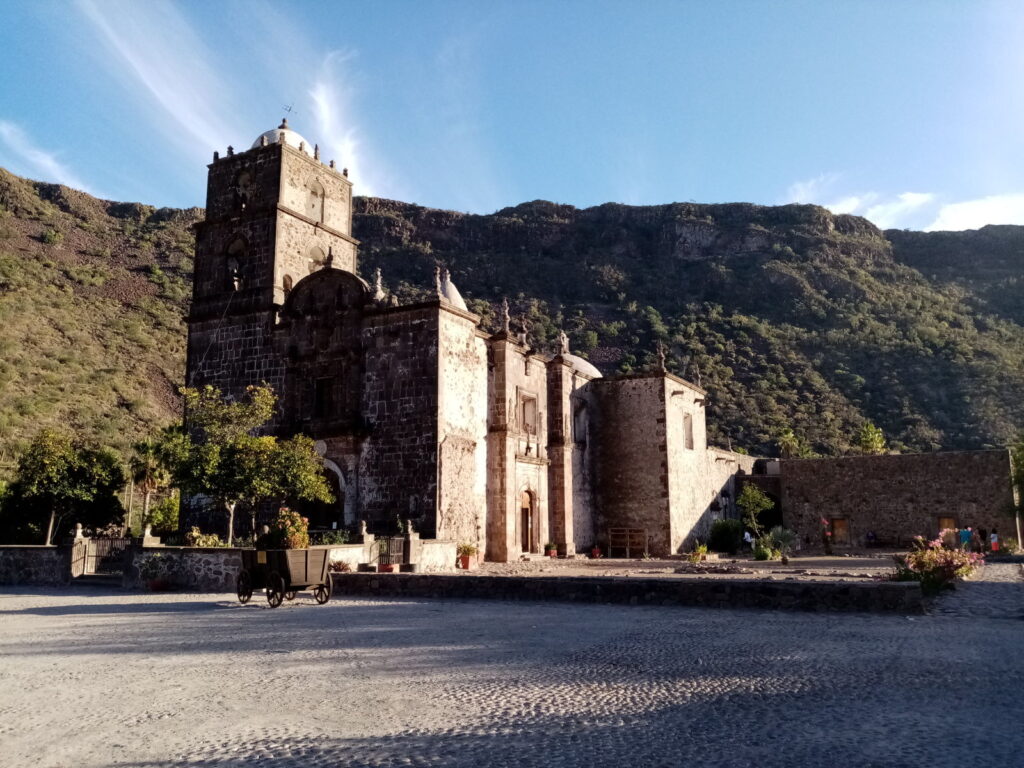
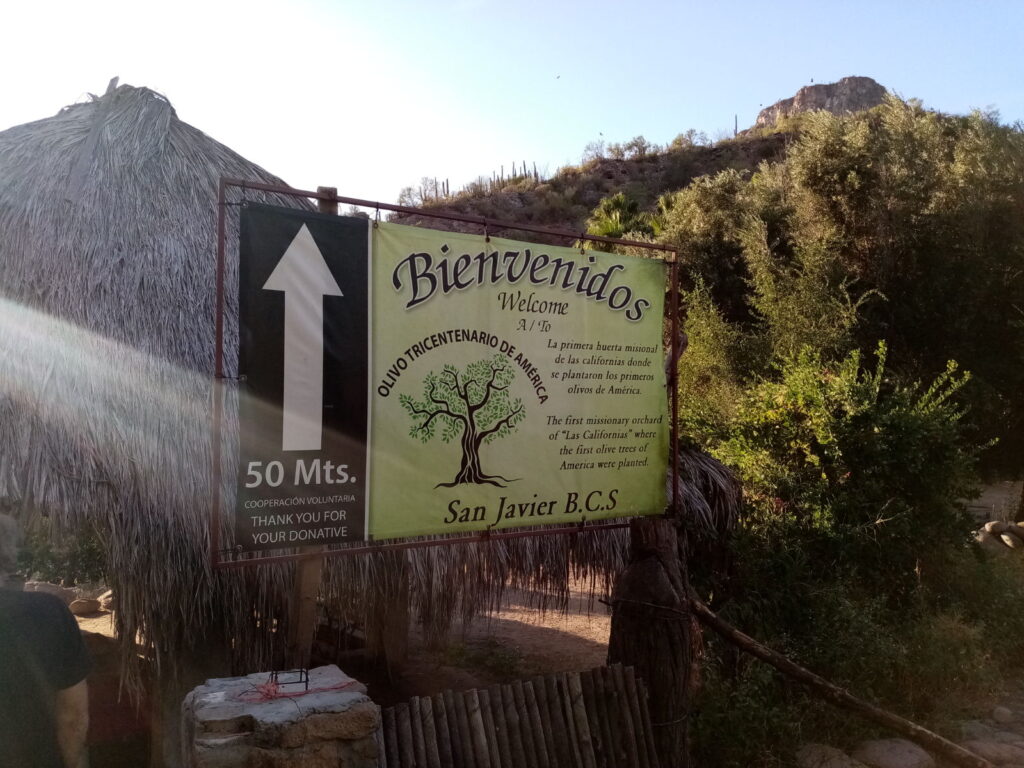
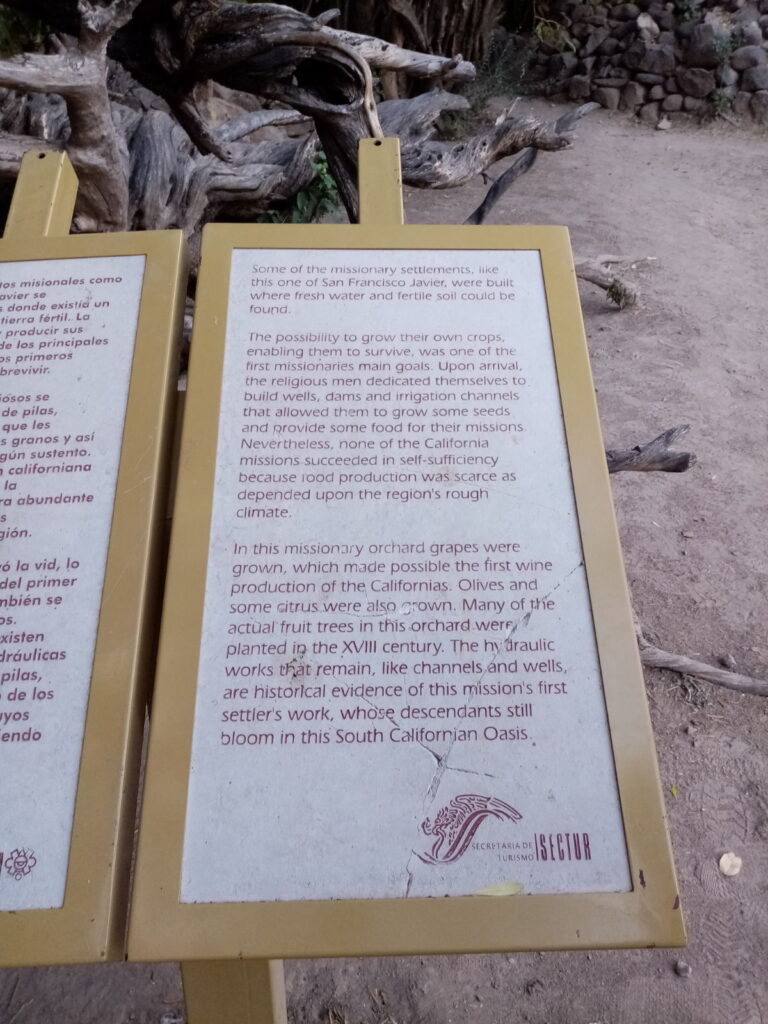
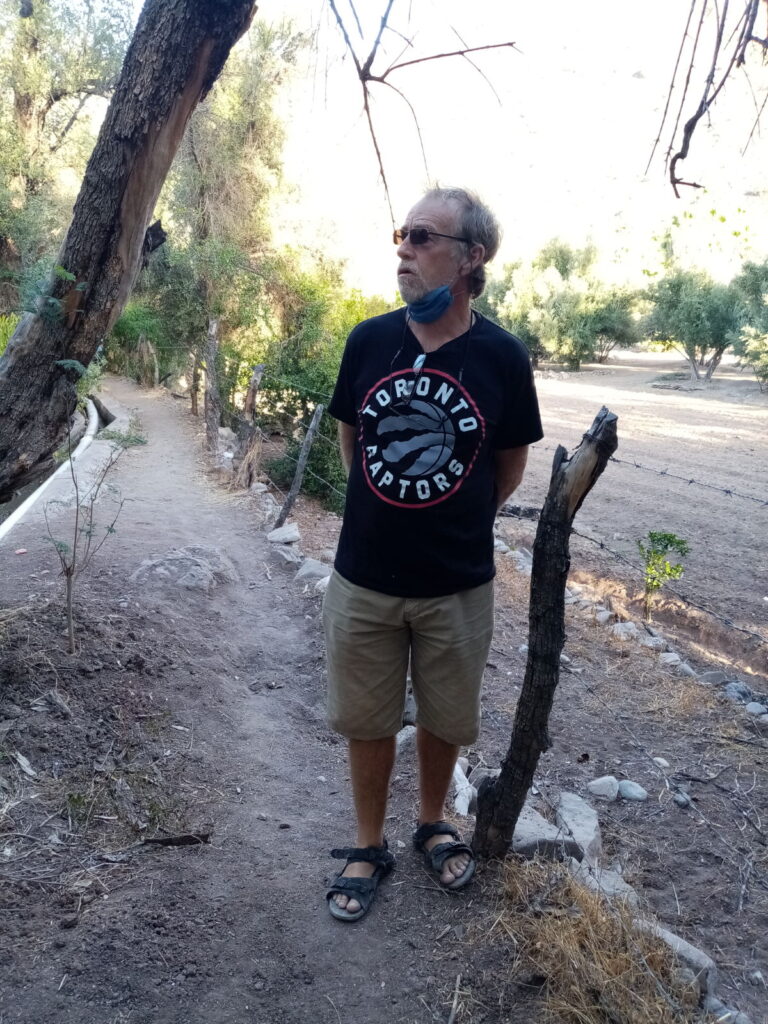
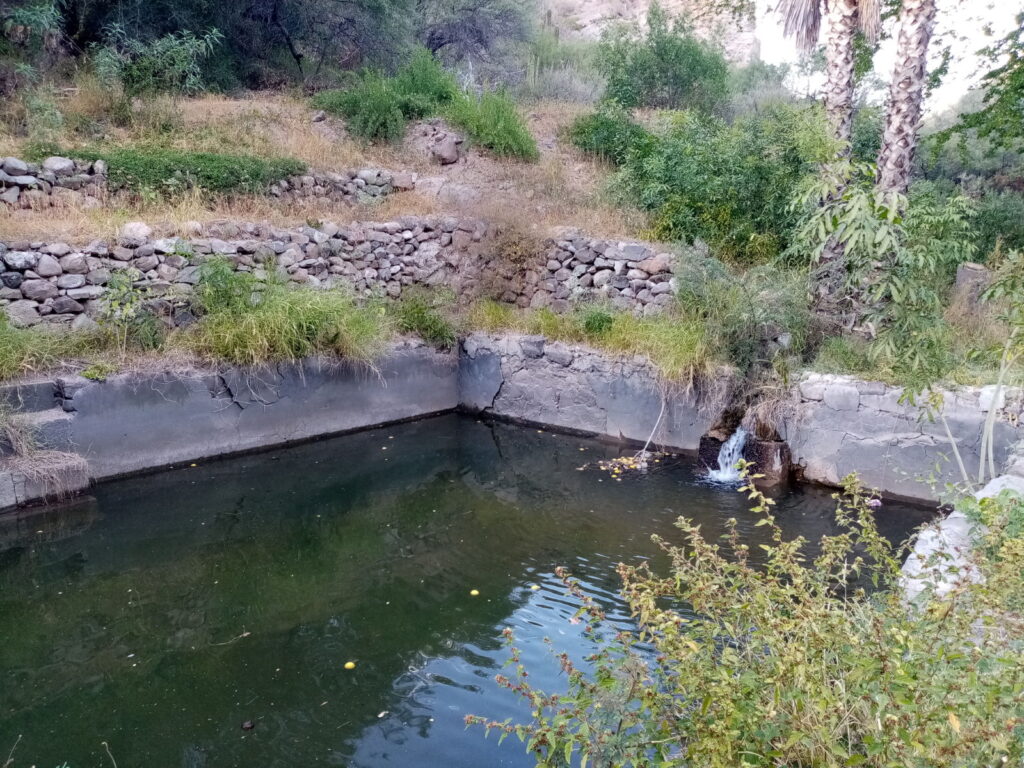
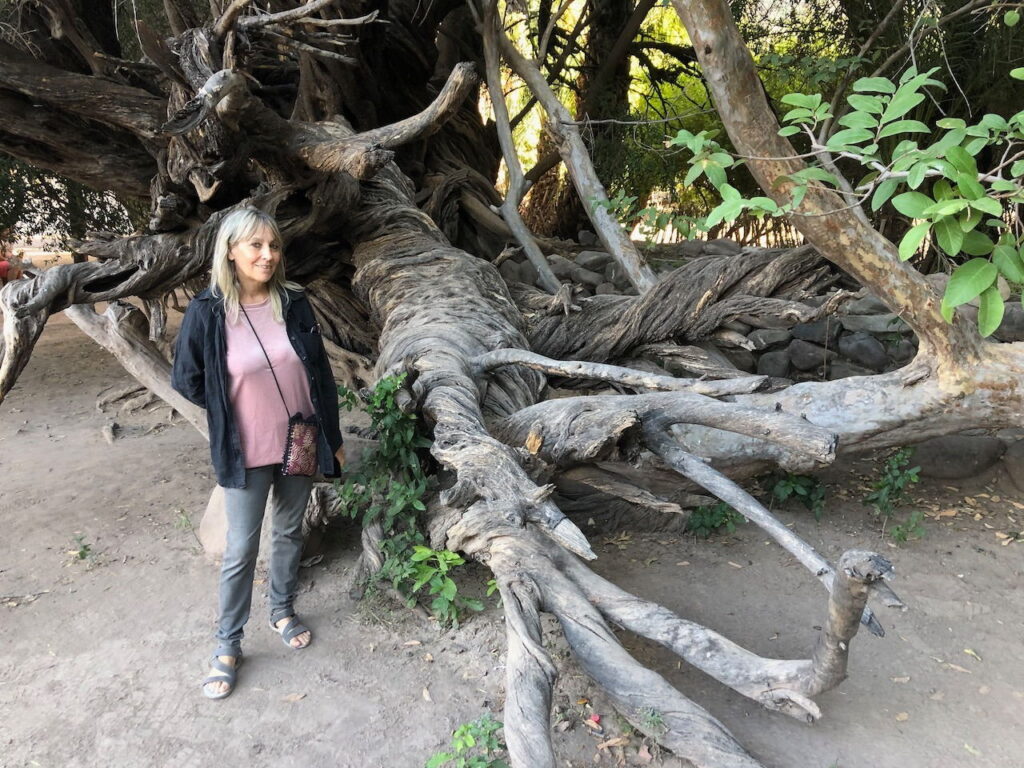
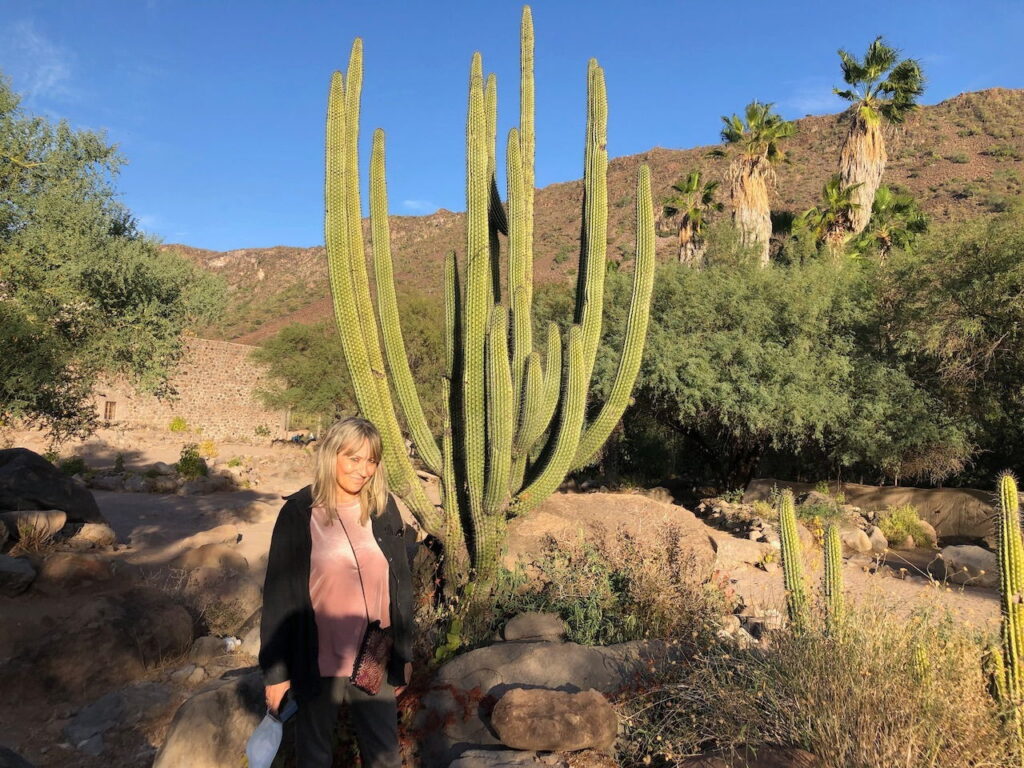
Noticing the entrance to the cathedral was open (it was closed on Paul’s previous visit) we went inside to be confronted with a well-maintained and very compact interior. A man approached us to offer his services as a guide (whether we wanted him or not as it turned out). He told us a little about the paintings on the ceiling and the dates of various things in his best English and then held his hand out for a tip. We felt obliged to leave then, so it was a fairly quick visit and I forgot to take any pics. I found the exterior to be more gorgeous anyway.
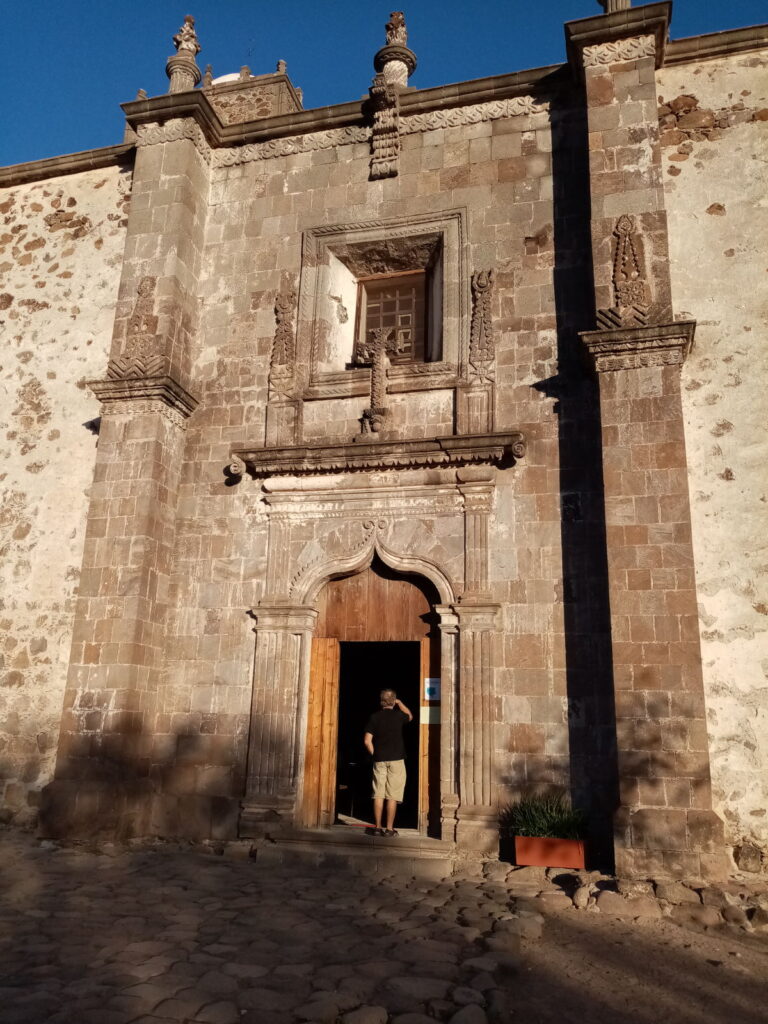
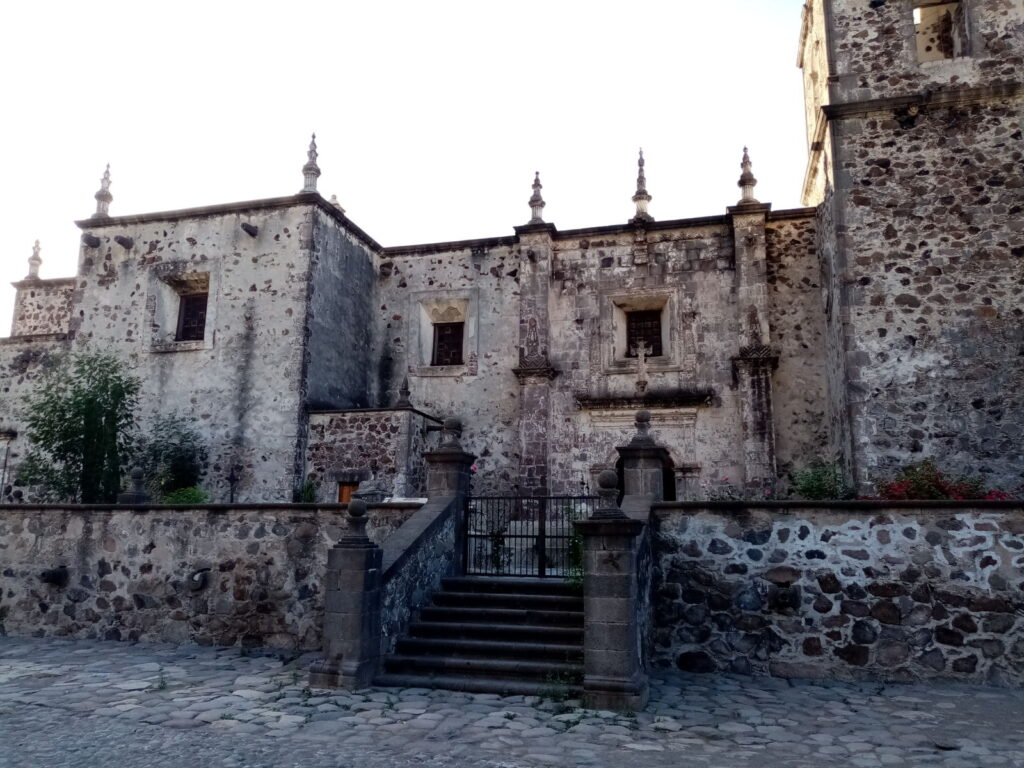
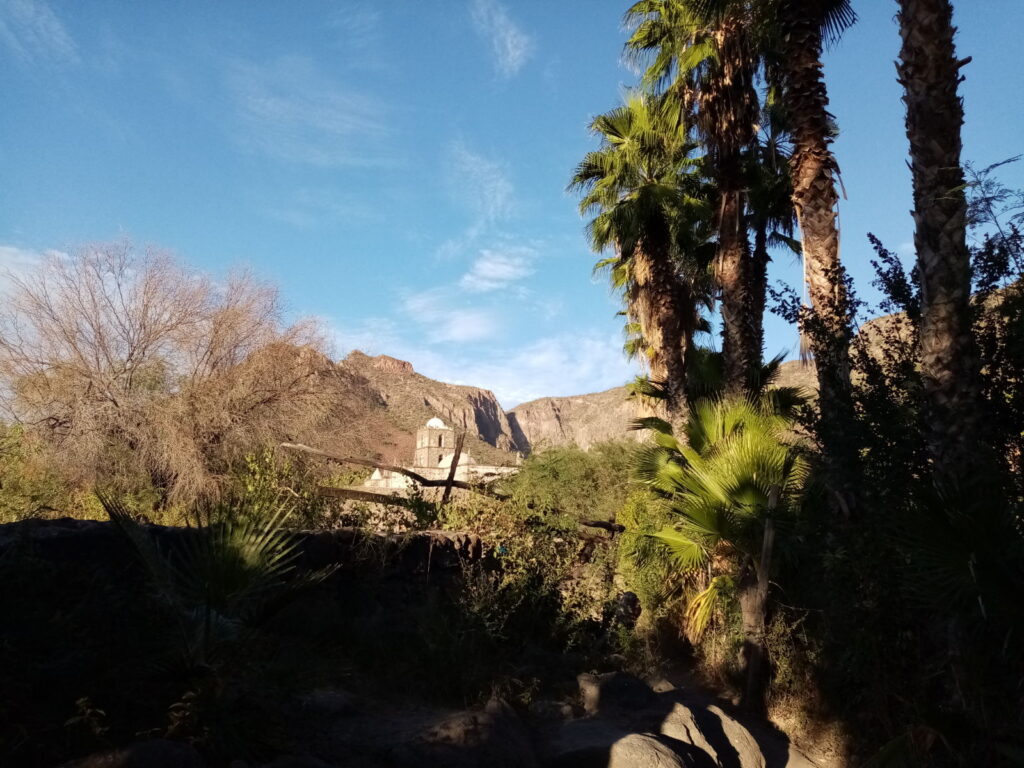
Back in the street we had a look at the shop where there was a display of locally made honey and wines and other crafts. I couldn’t resist the offer of a taste of the red wine and as it was pricey but genuinely delicious, bought a bottle for a Christmas treat. We didn’t fancy driving back down the mountain in the dark, not least because it would be a shame to miss the views. We stopped a few times to take in the expansive views before us. The pictures probably don’t do them justice. I kept marvelling at the fact that Jesuit pilgrims had climbed this mountain to reach the cathedral in blistering heat on a makeshift dirt trail. Their journey must have seemed endless.
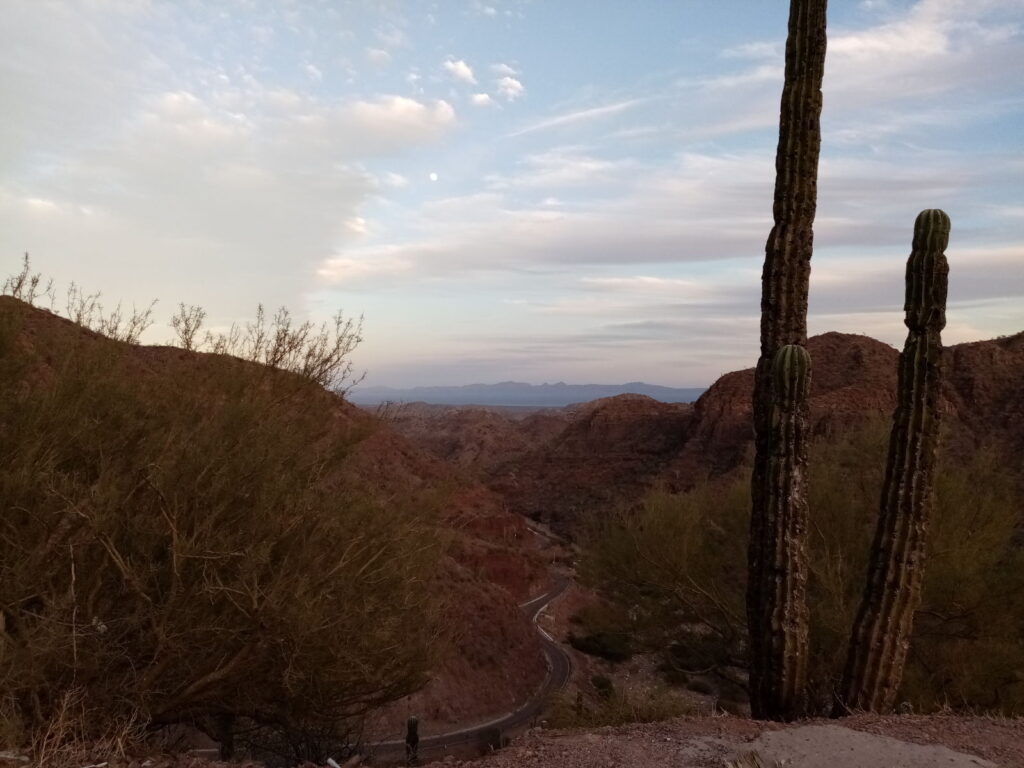
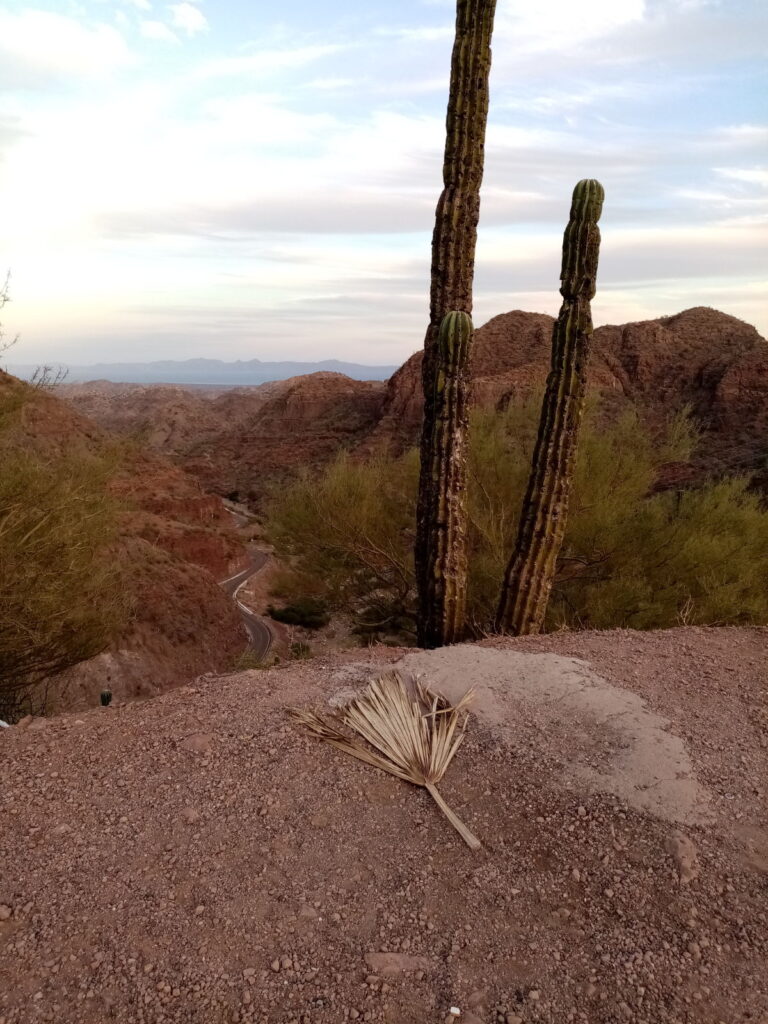
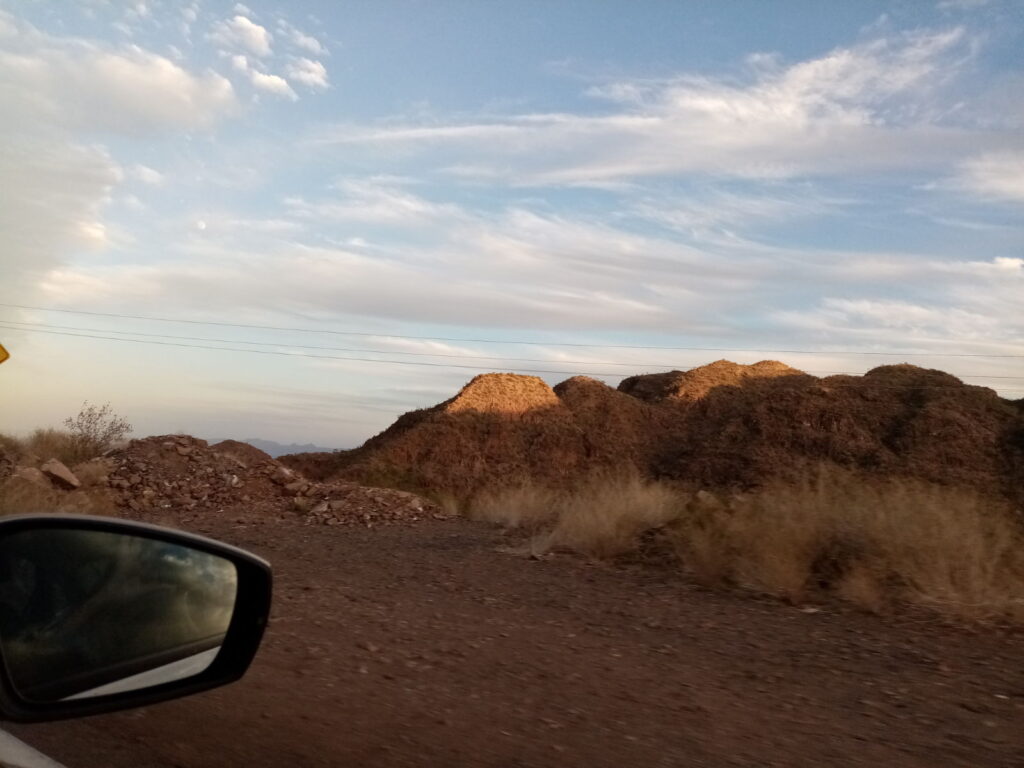
We had a few more days to wait until the work was completed on Sister Midnight and then we would be making our return journey to La Paz, taking in more of what the Sea of Cortez has to offer on the way.
Kathy

Such a good read Kath, nearly like being there (I wish). Loved the photos of those beautiful places so refreshing after the doom and gloom here. Well done ! you’re snorkeling again!!! Stay safe luv b xx
Great read Kathy as always and lovely photos, I had a good laugh at the bit with you screaming under water 😂 Hope you both have a lovely Christmas and hoping 2021 will at some time be a safer world! xx
Thank you, Lesley. Merry Christmas from Paul and I to you and all the family. Here’s hoping for a safer 2021! xxxx
Well done for doing the snorkelling!!! The pictures are like absolute paradise!! Except for the one with Paul at the top of the mast. I would pass on going up that!! If you find any pretty seashells bring some back for me please :). Great read and so well written xxxx